How to Write Your Own Manga
The Best Tips for Becoming a Published Manga Artist and Writer
- Comic Books
Think you've got a manga story in you somewhere? Most of us are capable of coming up with a decent storyline. It's getting it out on paper that takes some skill. Here are a few tips to help you bring out the next bestseller.

Write a Story Synopsis
You can't develop your story until you know where it's supposed to go. Your objective? Write a one-paragraph synopsis of your entire story, leaving out details and character specifics. Then take that paragraph and reduce it down to one sentence. For example, Dragon Ball Z might be "a group of friends battle strange enemies to protect the Earth." Does that really cover DBZ? No, but it sums up where the story will lead.
Create Character Profiles
In order to develop your story, you need to know who your characters are. Where did they come from? Do they have morals and values or none at all? A love interest? A best friend or an arch enemy? What makes them tick? Write a complete profile as if you were telling someone else about your guy or gal. Develop their strengths and weaknesses as these will come in handy when you begin to develop your storyline.
Write Your Story
For the moment, don't think about layouts or issues. Just write your story. What happens? Who does it happen to? Why did she leave or why did he come back? Will his powers ever return? Why did he lose them in the first place? Get all your questions answered on paper first. Then it's time to...
Think First Issue
With the "bigger picture" in mind, think the first issue. You'll need to give some background to your story and you'll want enough current action to keep the reader intrigued for your next installment. Decide how much information you want to give in your first issue. Got it? Now you're ready to storyboard.
Layout Your Storyboard
"Storyboard" is a phrase that refers to the layout of your manga or comic. Each panel conveys a certain amount of information and will also contain your artwork. Don't worry about the illustration right now (unless of course, you can draw as well as write!). Just focus on the text. Who says what to whom? What action scenes will you include? What information will they provide? Break your story down into pieces that you can section off into individual panels.
Bring It All Together
It's time to pull your story together with the artwork. Either find yourself a good anime artist or, if you're feeling adventurous, try your hand at drawing your own characters. There are several great books out there that teach drawing, as well as a few good online sources. Bring each character to life with various facial expressions and the dialogue you created in the storyboard.
Ready to deliver your pilot issue to the masses? Try TOKYOPOP's Annual Rising Star of Manga contest or put your manga online by setting up your own website. Good luck!
- If you're having trouble, start with some Fan Fiction. The characters are already created, all you need to do is play a game of "what if?" to come up with an alternate storyline.
- Look at some of your favorite anime shows and mangas, and try to figure out why they're your favorite. Is it the action? The characters? What makes it so great?
- Don't rush your masterpiece. Sometimes, great ideas can just come to you, but don't get frustrated if the development process takes longer than you imagined.
- Writing Contests: Express Your Creativity & Win Prizes!
- Interview With Manga Artist Hiro Mashima
- Artists in 60 Seconds: Tezuka Osamu 手塚 治虫
- Comics Careers for North American Manga Artists
- Interview With Manga Artist Tite Kubo
- Yen Press Publisher Profile
- Manga Series That Need to be Anime
- How to Win Essay Contests: A Step-by-Step Guide
- 22 Best Vampire Manga Books You Should Read
- 10 Tips for Overcoming Writer's Block
- The Best Manga by Osamu Tezuka
- What Is a Comic Book Panel?
- 'Given Circumstances' Activity for Student Actors
- How to Teach a Child to Draw
- How to Become a Comic Book Writer
- Red Mittens, Hooks, and Other Ways to Make Contest Entries Spectacular
- PRO Courses Guides New Tech Help Pro Expert Videos About wikiHow Pro Upgrade Sign In
- EDIT Edit this Article
- EXPLORE Tech Help Pro About Us Random Article Quizzes Request a New Article Community Dashboard This Or That Game Popular Categories Arts and Entertainment Artwork Books Movies Computers and Electronics Computers Phone Skills Technology Hacks Health Men's Health Mental Health Women's Health Relationships Dating Love Relationship Issues Hobbies and Crafts Crafts Drawing Games Education & Communication Communication Skills Personal Development Studying Personal Care and Style Fashion Hair Care Personal Hygiene Youth Personal Care School Stuff Dating All Categories Arts and Entertainment Finance and Business Home and Garden Relationship Quizzes Cars & Other Vehicles Food and Entertaining Personal Care and Style Sports and Fitness Computers and Electronics Health Pets and Animals Travel Education & Communication Hobbies and Crafts Philosophy and Religion Work World Family Life Holidays and Traditions Relationships Youth
- Browse Articles
- Learn Something New
- Quizzes Hot
- This Or That Game
- Train Your Brain
- Explore More
- Support wikiHow
- About wikiHow
- Log in / Sign up
- Arts and Entertainment
How to Write a Manga Comic
Last Updated: October 19, 2022
wikiHow is a “wiki,” similar to Wikipedia, which means that many of our articles are co-written by multiple authors. To create this article, 32 people, some anonymous, worked to edit and improve it over time. This article has been viewed 163,618 times. Learn more...
Have you ever wondered how to write a manga? Well here are some basic tips to get you started.

Community Q&A
- Think of good plots in your free time. Thanks Helpful 4 Not Helpful 0
- Sketch FIRST then go onto to final draft paper and materials it makes a whole lot of a difference. Thanks Helpful 6 Not Helpful 0
- Vary the layout on each page; the same old panel setup over and over gets repetitive. Thanks Helpful 4 Not Helpful 1

- Don't copy someone else's work!- You don't want to be sued for copyright issues! Thanks Helpful 17 Not Helpful 0
- Be patient if someone doesn't like your ideas. Maybe it's time to go back to the drawing board, or maybe you have something really great, but it's just not their cup of tea. The Harry Potter series and the Twilight series were both rejected by over ten publishers each, but now look at how popular they are! Thanks Helpful 14 Not Helpful 0
You Might Also Like

About This Article
- Send fan mail to authors
Did this article help you?

Featured Articles

Trending Articles

Watch Articles

- Terms of Use
- Privacy Policy
- Do Not Sell or Share My Info
- Not Selling Info
Get all the best how-tos!
Sign up for wikiHow's weekly email newsletter
- Privacy Policy

How To Become a Mangaka: A Complete Guide Plus Tips
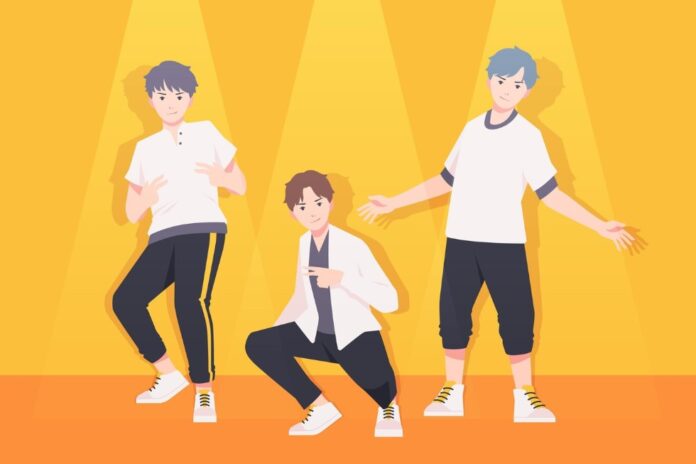
Mangaka (漫画家) is the Japanese word for a comic artist or cartoonist. Specifically, it refers to artists who create manga, which is the Japanese style of comic books and graphic novels.
Manga is a popular art form, with many manga being adapted into billion-dollar anime and live-action films. As the influence of Japanese pop culture spreads worldwide, more people dream of becoming mangaka.
This guide will explain everything you need to know to start a career as a manga artist, from developing your skills to getting published.
What is Manga?
Manga refers to Japanese comic books and graphic novels. The word “manga” combines the Japanese words for “whimsical” and “pictures.”
Unlike American comic books which are generally coloured, manga is usually published in black and white. The art style features exaggerated facial expressions, action lines, and large dreamy eyes.
Stories in manga are told through a sequence of panels, read from right to left. This is opposite to the left-to-right reading style of Western comics.
Manga encompasses many genres, including action, romance, horror, comedy, and more. Some manga are created for specific demographics, such as young boys or girls. But many titles enjoy cross-demographic popularity.
The Most Famous Mangaka
Many mangaka have achieved celebrity status in Japan and even internationally. Here are some of the most influential manga artists:
- Osamu Tezuka: Known as the “God of Manga,” Tezuka created iconic series like Astro Boy and Kimba the White Lion in the 1950s-60s. He pioneered many techniques still used in manga today.
- Akira Toriyama: Creator of globally beloved series like Dr. Slump and Dragon Ball. Toriyama’s works introduced millions outside Japan to manga.
- Rumiko Takahashi: One of the most successful female mangaka. She created the popular series Ranma 1/2, Inuyasha, Rin-ne, and others.
- Eiichiro Oda: His pirate manga One Piece has smashed sales records, with over 490 million copies sold worldwide.
- Naoko Takeuchi: Her magical girl series Sailor Moon has been iconic since the 1990s, inspiring numerous anime adaptions.
- Hirohiko Araki: His avant-garde horror series JoJo’s Bizarre Adventure has spanned over 30 years with a devoted international fanbase.
As these examples show, the most successful mangaka create series that catch on worldwide. Having an original idea with universal appeal is key.
Skills Needed to Become a Mangaka
Mangaka handles both the visual art and storytelling involved in creating manga. Here are some of the main skills you’ll need:
- Drawing: This skill is essential. You must be able to draw by hand and digitally. Develop your own style but also be versatile.
- Storytelling: Mangaka writes the plot and dialogue along with the art. You must craft compelling stories and characters.
- Panel layout: Plan the sequence and pace of panels to control the flow of the story. This takes planning and visual storytelling skills.
- Speed: Mangaka works to strict deadlines. You need to draw quickly and consistently to get a chapter done each week.
- Collaboration: Most mangaka work with assistants and editors. Communication skills are vital.
- Perseverance: The manga industry is very competitive. You must keep trying and improving your skills.
How to Develop Your Mangaka Skills
Here are some tips for developing the necessary drawing, storytelling, and manga-specific skills:
- Practice constantly: Set aside time each day to draw. Sketch characters, objects, and landscapes using online photo references. The more you practice, the faster and more skilled you’ll become.
- Study the masters: Read manga by famous artists in genres you want to work in. Analyze their panelling, character designs, pacing and compositions to improve your own work.
- Take art classes: Formal instruction can teach you foundational skills like anatomy, perspective, lighting, and colour theory. These apply even when drawing in black and white.
- Learn digital art: Most manga work today is done digitally. Practising on a graphics tablet helps you develop this essential skill. Programs like Clip Studio Paint are made for drawing manga digitally.
- Attend workshops: Many manga artists hold classes and workshops. Participating provides hands-on learning and a chance to get professional feedback on your work.
- Write every day: To improve your storytelling, write short stories, poems, manga plots, etc. daily. Experiment with dialogue and descriptions. Read fiction in the genres you want to work in.
- Study panelling: Analyze how your favourite manga uses panel layouts to pace the story. Experiment with different panelling techniques in your own work.
- Develop original stories: Mangaka jobs require pitching story ideas to editors. Start coming up with unique characters and storylines early.
How to Get Published as a Mangaka
There are a few potential paths to getting published in Japan:
Win a New Mangaka Contest
Many Japanese manga publishers hold annual contests seeking new artists. For example, Weekly Shonen Jump’s JUMP Treasure New Mangaka Audition offers the winner a contract to serialize a series.
These contests allow publishers to discover promising rookie talent. If you win, you get invaluable exposure and mentoring.
The catch is contests are extremely competitive, with only 1-2 winners chosen out of thousands of applicants. You’ll need very polished skills and stories to have a good chance.
Submit One-Shot to Magazine
Japanese manga magazines frequently run one-shot manga stories by amateur artists. For example, Shueisha’s Jump NEXT! and Shogakukan’s Ura Sunday magazines.
One-shots are short, standalone stories just 10-20 pages long. If editors like your submission, they may contact you and ask to see more story ideas. This can potentially lead to a serialization contract.
As with contests, competition is fierce. Really refine and practice your short manga before submitting.
Find Work as an Assistant
Working as an assistant for an experienced mangaka helps you learn directly from a pro. You’ll gain vital industry knowledge and make connections.
Many assistants parlay this experience into publishing their own manga. However positions are limited, so you’ll need an impressive portfolio showcasing your skills.
Self-Publish Doujinshi
Doujinshi refers to self-published works, including manga. Many aspiring artists create doujinshi (same meaning as “indie comics”) and sell them at huge conventions like Comiket in Tokyo.
This lets you directly reach tons of potential fans. If your doujinshi becomes a hit, it can demonstrate commercial viability to publishers.
Of course, the Doujinshi market is also very saturated. Marketing skills are vital to make your work stand out from the crowd.
Tips for Aspiring Mangaka
Here are some additional tips to help you achieve your goal of becoming a published mangaka:
- Start young: Many famous mangakas began drawing and submitting manga as teenagers. Starting your career early allows more time to refine your skills.
- Know the industry: Understand the major Japanese publishers and magazines. Research which ones publish genres you’re interested in. Follow submission guidelines closely.
- Seek mentors : Experienced mangaka artists, editors, and industry veterans can provide invaluable mentorship. Attend events to connect with pros.
- Network online: Social media allows networking with artists worldwide. Share your work and mutually critique each other.
- Attend conventions: Selling doujinshi at conventions lets you get fan feedback. You can also meet editors and artists.
- Consider relocating: Working in Tokyo provides more job opportunities. If language is an obstacle, consider attending a manga school in Japan, which sometimes provides dorms.
- Practice stamina: Mangaka works long hours on tight deadlines. Building physical and mental endurance helps you handle the workload. Stay healthy.
- Don’t give up: The industry is very competitive. Expect a long struggle before getting published. Persist and continue improving your manga.
- Have a side income: At first, you likely won’t earn much from manga. Have savings or a part-time job until your career takes off.
- Learn Japanese: Although some manga publishers accept submissions in English, you’ll have much better chances if you can speak Japanese fluently.
Is the Mangaka Lifestyle for You?
If you want to become a mangaka, it’s important to have realistic expectations about the career path. Here are some things to consider:
- Very competitive industry: There are far more aspiring mangaka than available jobs. Publishing typically requires years of hard work developing skills.
- Irregular income: Most artists don’t earn a steady paycheck. Income relies on sales and commissions. Having a financial safety net is crucial.
- No vacations: Mangaka works on tight serialization schedules with new chapters due every week. Falling behind isn’t an option.
- Long hours: Mangaka routinely work 12-18 hours per day to meet relentless deadlines. Stamina and time management are vital.
- Health risks: A sedentary lifestyle and work pressure lead to a high incidence of back pain, wrist injuries, insomnia, and other issues for many mangakas.
- Sensitivity to criticism: Editors often demand changes or cuts. Thick skin is required to not take criticism of your work too personally.
If this reality suits you, then you have the dedication to make it as a mangaka! Passion for manga will keep you motivated through all the hard work.
Becoming a professional mangaka takes tremendous persistence, skill, and patience. But for dedicated artists, it offers an unparalleled chance to entertain millions with their unique stories and art.
Success requires mastering both the visual and writing aspects of manga creation. Polish your skills and develop a portfolio of impressive work. Stay committed through years of practice, networking, and submission attempts. Aim to win contests, get published as an assistant, or self-publish doujinshi to build your reputation.
With enough hard work and perseverance, you can achieve the dream of becoming a published mangaka in Japan!
RELATED ARTICLES MORE FROM AUTHOR
Galotetube: where exceptional video meets seamless streaming, sending money from one bank to another: a step-by-step guide, steven assanti’s journey: life after ‘my 600-lb life’, leave a reply cancel reply.
Save my name, email, and website in this browser for the next time I comment.
Latest news
Legal strategies for victims of contaminated water exposure, the top trends in total rewards in 2024, how to seek out financial support and assistance for legal bills, maximizing roi: how b2b sales consulting can transform your business, editor picks, popular posts, blissful groonygirls: radiating positivity through fashion mastery since 2017, ogomovies: say goodbye to boredom with endless streaming, the heartbreaking life of melonie jenkins, sister of notorious killer nikko..., popular category.
- Business 50
- Technology 46
- Investment 16
support your career
get the interview & get the job
- Finding a Job
How To Become a Mangaka: A Complete Guide Plus Tips
If you live in America and want to become a mangaka, you probably have a lot of questions and concerns. There is the belief that to succeed in this industry, you must reside in Japan. Even fewer Americans who want to be mangakas can actually get their work published.
- Read manga. By reading manga, you can get to know the styles of popular artists and better understand the conventions and artistic expressions used by published mangaka. …
- Develop your own style. …
- Attend a manga school. …
- Submit short works. …
- Become an assistant. …
- Relocate for work. …
- Creativity. …
- Visual art.
How to become a mangaka
The actions listed below serve as a starting point for entering the manga industry:
1. Read manga
You can learn about popular artists’ styles and gain a better understanding of the conventions and artistic expressions used by published mangaka by reading manga. You can define your individual manga drawing style by learning more about the types of stories and aesthetics you enjoy.
You can learn more about the many genres that are specific to Japanese culture by reading various manga, such as:
2. Develop your own style
By imitating the artwork of their favorite manga artists, mangaka frequently begin to hone their artistic abilities. Once you understand the fundamentals of drawing in the manga style, you can start to create characters and backgrounds using your own techniques. Manga is rooted in Japanese culture, but it also draws inspiration from early 20th-century American comics. Studying both traditional and contemporary art can assist you in identifying your personal influences and developing a unique artistic style.
3. Attend a manga school
Although some mangaka are self-taught, enrolling in classes through a dedicated manga artist program can help you develop the abilities and self-assurance required to be successful in the industry. Focused instruction on producing the stylized art used in Japanese comics is provided in manga schools. Like other art schools, manga academies instruct students on other essential elements of publishing and marketing their works. Your career as a mangaka can also be aided by general art programs. You can enter the manga publishing industry after graduating from art school without further formal education.
4. Submit short works
A mangaka can start out by submitting their short works to magazines and winning a manga award. If you win, you might be introduced to a publisher or editor who can help you promote your work. It’s common for published contest entries to result in a contract for a full-length manga. Before you have the chance to have your work published as the result of a successful contest entry, this process can take several years of applications and rejections.
5. Become an assistant
Many aspiring manga artists begin their careers as assistants for manga publishers. Assistants finish drawings and edit content for a mangaka, among other tasks required to complete projects. You can network with editors and publishers in the field by working as an assistant, which may open up other job opportunities in the future. Gaining the respect of established mangaka can help your career and provide you with a mentor who is familiar with the manga market.
6. Relocate for work
Despite being well-liked worldwide, the majority of manga is still created in Japan. Moving to the center of manga creation may be the best move for your career if you’re looking for work as a mangaka, especially if you’re just starting out. Move to the region with the most job opportunities after researching the studios that produce content that matches your interests and skills.
What is a mangaka?
A graphic artist and writer who makes Japanese-style comics is known as a mangaka. The word “manga” is used in Japanese to refer to a particular artistic style and comic book format that are native to Japan. Additionally, it refers to a comic book or graphic novel that was distributed in multiple volumes or as a serial in a magazine. Numerous manga tales serve as the basis for anime, animated movies, and television programs that are also produced in the manga style. All Japanese writing is read right to left, including manga stories.
A complete story is told in multiple volumes of a graphic novel called a manga, which is frequently collected after being published in a weekly magazine. Mangaka, as opposed to Western comic book illustrators, usually write and draw the entire saga themselves. They collaborate with manga studios and publishing houses, frequently producing multiple series as successful authors and illustrators after becoming well-known for a single piece of work. Manga, which was once popular primarily in Japan, is now read and enjoyed by readers in different nations, and mangaka are known to fans all over the world.
Mangaka skills
Manga artists should cultivate the following abilities to succeed in the field:
Manga creators use imagination to convey their ideas through art and narrative They turn their ideas into graphic novels or serial comics by turning them into stories and images. To succeed in the field and continuously produce new content throughout their careers, mangaka use their creative expression.
A mangaka is defined by their art. A large part of a manga artist’s career is determined by how well they draw characters and scenes. Mangaka need to have strong artistic abilities, such as drawing and painting, to compete in the industry. Frequently, mangaka are skilled artists who have studied art theory and practice. They learn how to convey ideas and tell stories using color and composition.
Fundamental design principles are applied by mangaka in order to create their works of art in the manga style. They design graphic layouts and picture the manga story’s characters and settings. They also make decisions about the color tones, perspective, and visual weight of each panel and page of their artwork using design principles.
Storytelling
Many mangaka combine their writing skills with their artistic abilities to create content as authors and illustrators. Successful manga artists are aware of the components of a compelling story and compelling characters. They gain knowledge of how to develop narrative arcs that enthrall readers by using the motivations and experiences of the characters to produce in-depth illustrations of each scene.
Communication
Mangaka develop ideas for graphic novels while collaborating with experts to create the finished product. In a manga studio, they frequently finish a project with the aid of assistants, editors, and other visual artists. In order to present their work, mangaka must also be able to communicate their ideas clearly using storyboards and outlines. They might even approach publishers with a story pitch and use their influencing abilities to persuade them to accept a story idea or publish a manga.
Salary and job outlook for mangaka
Here are some suggestions to support you as you pursue a career as a manga artist:
Learn Japanese
Learning the language can make it simpler to launch a career as a mangaka if you have plans to study and work in Japan. You can start learning Japanese in your home country or when you move there using language apps, online courses, or in-person classes. If you begin learning some conversational Japanese before you go to the country, it might be simpler for you to adapt and communicate with others in the industry.
Enter manga contests
Entering manga drawing competitions is one way to kickstart your career and increase your name recognition in the field. To get the most exposure, look for ones supported by well-known manga publishing companies. Some competitions also offer cash prizes that you can use to finish a project or pay for school.
Start using manga software
Your computer or mobile device can help you learn the digital tools used in Japanese comic design by downloading manga-drawing software. These programs give beginners the chance to create using the popular in the industry manga graphic style in a digital format. After selecting a software program, look for online tutorials or articles that explain the program’s fundamental components. You can also find tutorials for learning how to draw manga using software.
Get recognized with Doujinshi
The manga equivalent of self-publishing is called doujinshi, and it has a devoted following. Doujinshi, also known as independent comics, are a good way for emerging manga creators to gain a following and catch the eye of scouts from well-known publishing houses. The Doujinshi market offers distinctive and original works by manga authors across all genres. Douhinshi mangaka sell their works in a variety of ways, including at sizable conventions where independent artists congregate to display their creations to fans and publishers.
Attend conventions
Conventions for anime and manga can be a great place to meet other fans and learn more about the field. Think about attending international conferences to increase your exposure to the global market. Attend panels with industry experts and published mangaka. Doujinshi artists may also have the chance to do so in areas designated for special exhibitions.
Network with other mangaka
You can advance your pursuit of this distinctive career by getting to know and keeping in touch with other aspirant mangaka. Having a network of industry experts can help you find jobs, get creative inspiration, and get support from other artists who share your values. Through online or live artist communities, you can pick up new skills and get feedback on your own work.
How to become a MANGA ARTIST? | INTERVIEW with a PROFESSIONAL Manga Creator in JAPAN | Weekly Shonen
Can a non Japanese become a mangaka?
It is best to take art classes, but you don’t have to: just sign up for competitions and give it your best shot. You can become a manga artist even if you don’t reside in Japan.
What are the steps to become a mangaka?
Yes, anyone who wants to create manga can do so, and we have examples of non-Japanese people becoming mangakas. But when it comes to stepping into a future you are not entirely familiar with, it is not always a simple yes.
Related posts:
- 3 Reasons Why Now’s a Great Time To Get a Food & Bev Job
- 7 Internships for Aspiring Screenwriters (Plus Benefits)
- 12 Alternative Careers for Carpenters To Consider
- 5 Types of Acting Roles (Plus How To Find the Right One for You)
- 3 Types of Board Members (Plus 10 Types of Boards)
- 38 Highest-Paying Careers in Utah To Consider
- 41 Production Roles for TV and Film Industry Professionals
- 10 Day Jobs for Artists (Plus Definition and Benefits)
Related Posts
12 industries hiring 16-year-olds (plus tips for teens), how to become a sucessful geospatial analyst in 9 steps, leave a reply cancel reply.
Your email address will not be published. Required fields are marked *
Save my name, email, and website in this browser for the next time I comment.
Manga & Anime Favorites
- My Hero Academia
- Read Free Manga!

The Shonen Jump Guide to Making Manga
Read the shonen jump guide to making manga.
From Dragon Ball to Demon Slayer , from One Piece to My Hero Academia and beyond, Weekly Shonen Jump has published some of the finest manga to grace the earth. Now, the creators and editors behind several of the most popular manga in Shonen Jump sit down to discuss how to craft exciting stories, how to use your tools to the best of your abilities, and more. Whether you’re getting started on your artistic path or a veteran looking for new tips, The Shonen Jump Guide to Making Manga is the perfect book to sharpen your skills. Featuring commentary and advice from Eiichiro Oda ( One Piece ), Tite Kubo ( Bleach ), Shun Saeki ( Food Wars ), Kaiu Shirai & Posuka Demizu ( The Promised Neverland ), Yusei Matsui ( Assassination Classroom ), Kohei Horikoshi ( My Hero Academia ), and more!
If you like The Shonen Jump Guide to Making Manga, VIZ Editors recommend:

Get the latest manga & anime news!
You’ll never miss a beat when you subscribe to our newsletter.
Subscribe to the VIZ Newsletter
By subscribing, I agree to VIZ's Terms of Service and Privacy Policy .
If you believe you’re receiving this message in error, please contact Customer Service
Please submit a suggestion, comment or question - we would love to hear from you!
Sign up for a new VIZ account
Already have a VIZ account? Log in .
By signing up, I agree to VIZ's Terms of Service and Privacy Policy .
Log in to VIZ
Don't have an account? Sign up .
Reset Password
Enter the e-mail address associated with your account and we'll email you a link to reset your password.
Requesting Password Reset Instructions...
You have been sent an email with instructions on how to reset your password., note: if you don't receive a message right away, please be patient. at times some customers have experienced delays of several minutes., note to our visitors in the eu, edit comment.

- Legends of the West
How to Write a Comic Book or Manga for Beginners
- Colors vs. Black & White comics|Five reasons why color comics are popular
- Best Drawing Tablet for Beginners and Pro-Wacom Intuos Pen Tablet
- Screen Tones for Manga- Drawing a Professional Comic Book
- Drawing comics with Japanese Pen Nibs; Love or Hate
- What Art Supplies Do I Need to Draw Manga
- BECOME THE BEST COMIC BOOK ARTIST: TIPS FOR ASPIRING ARTISTS
Anny January 24, 2019 Art , comic books , drawing , manga , Web Comics 7 Comments
HOW TO WRITE A COMIC BOOK OR MANGA FOR
CREATING THE CHARACTERS AND DEVELOPING THE STORY - THE HERO'S JOURNEY
The core of every novel, manga, comic book, movie, and play is the story and its characters. In this post, I talk about some of the basics for writing a story, and the twelve stages of the Hero's Journey.
How characters in stories developed? How do stories evolve?
Creating and developing stories and characters is a unique process for every artist.
Art, in general, does not have strict rules that everyone must follow or the project will fail. It's not like cooking. Your dish won't be good if you don't follow step by step a recipe.
Writing a comic book, novel or movie for the public, however, requires some rules and knowledge. It's important to know the stages and structure to build a good story and interesting characters.
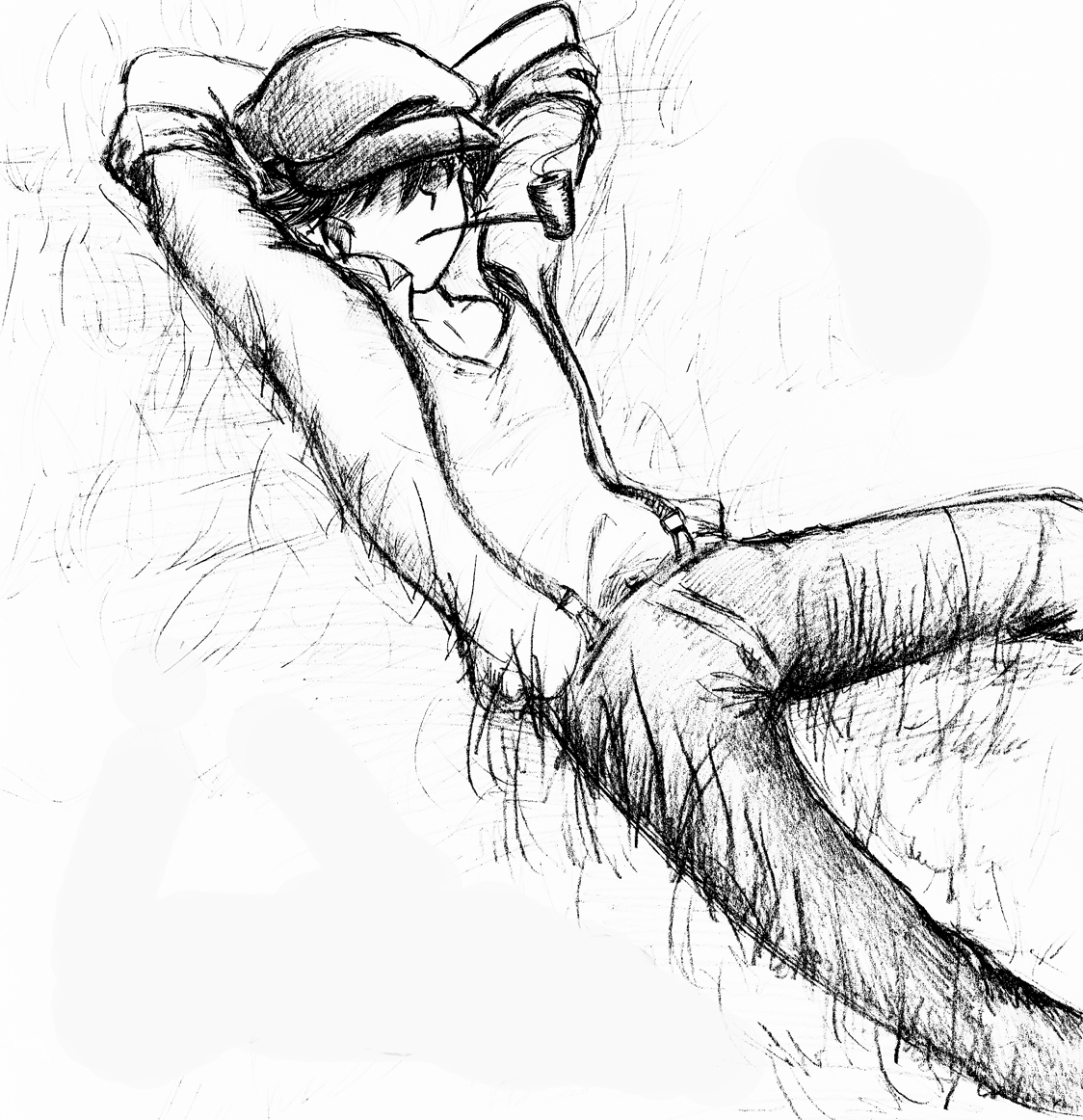
The easiest way to explain these basics is to talk about how I did create my characters and the steps that I am following to write my graphic novel.
In Legends of the West , I created many characters. Two of them, however, are not coming from my imagination but from two famous novels, The Adventures of Tom Sawyer and The Adventures of Huckleberry Finn written by my favorite American author, Mark Twain . Huckleberry Finn and Tom Sawyer are two of the main characters in my story.
It's easy to think that I stole these two characters from the famous novels and adapted them into my story, like many other authors previously did for movies, cartoons, comics, and plays.
It comes natural to believe that taking characters from someone else work and fit them into a new story it's easier than create your own. Actually, this process it's harder than anyone may think.
Mark Twain is my favorite author. I like all his novels and I fell in love with Tom and Huck adventures. I have a lot of respect for these two masterpieces and its author. When I decided to use Tom and Huck in my graphic novel, I promised to try to do my best to keep them as close as possible from the original books.
In order to achieve this goal, I have to constantly ask myself how Huck and Tom respond in situations happening in the manga. Researching and studying the original characters and their environment helped me to achieve this challenge. At least, I hope that, (I can't ask Mark Twain to review my story, unfortunately).
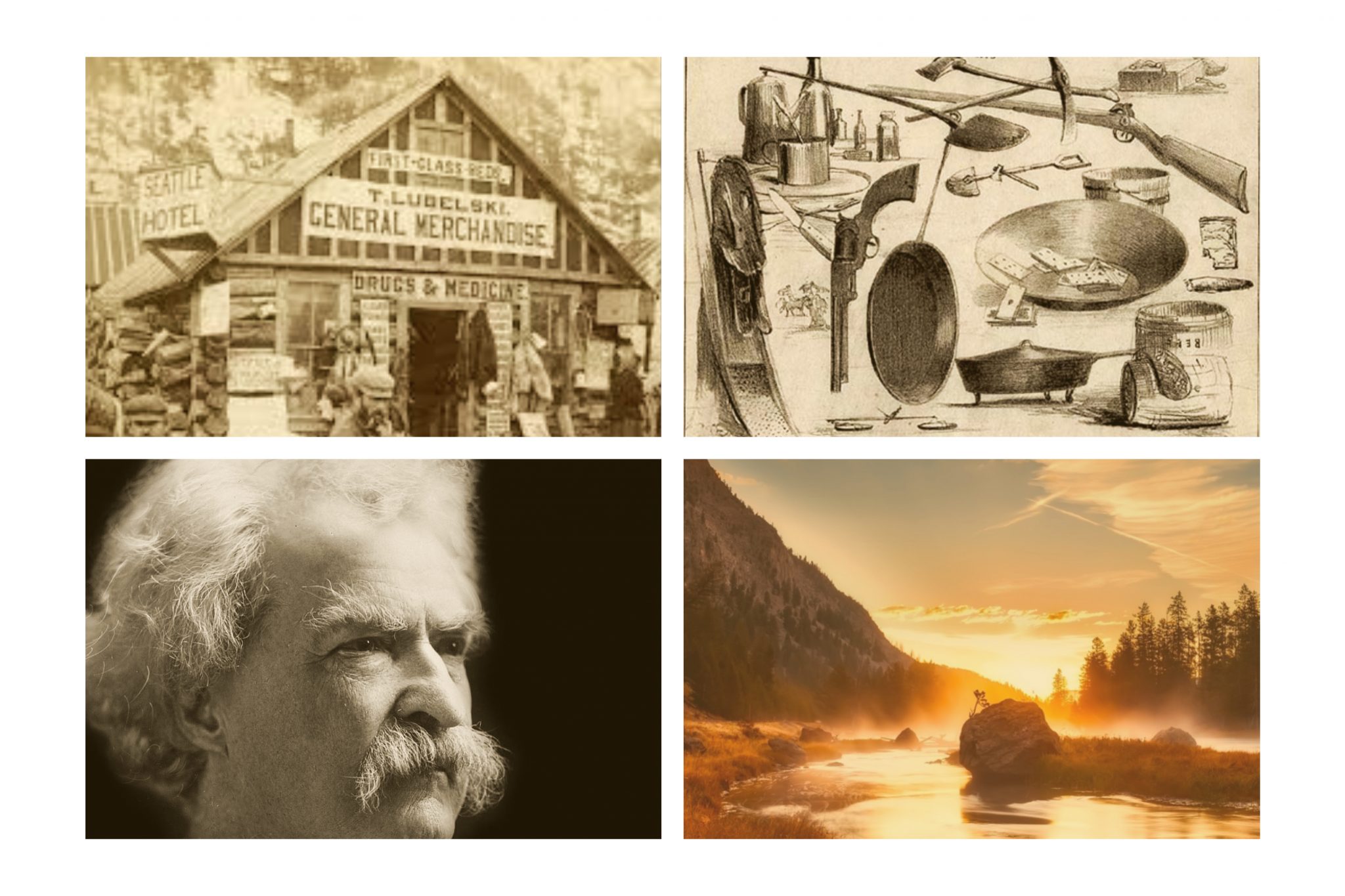
Writing a story requires a lot of work and involve a lot of research. Wherever a story is set in a particular time of History, in a futuristic period, in an imaginary world, or in our present time, it's vital for the author to know what he's going to write about it. The storyteller must research the landscape, the history, the costumes, and the way of life of a particular period or place. In my case, I learned about the Gold Rush era. I read analysis about Tom Sawyer and Huckleberry Finn characters. I researched costumes, weapons, and the way of life of that historical period.
For me, all of these work is not a painful job but all the opposite. That's why I always recommend to write or draw something that you are passionate about it.
My researching and digging about Mark Twain and the American history, helped me to understand the two characters and insert them into my story without going too far off from their own nature. Taking the time and the effort to know about your story theme is a good way to get inspired and generate new ideas for a story.
DO NOT TRY TO EMULATE AN ORIGINAL WORK
Another aspect of writing a story with non-original characters is do not try to emulate the original work. Hollywood, plays, books, and even cartoons tried to rewrite a masterpiece adapting the two famous characters into something for a younger audience. It didn't happen only for Mark Twain work, but for other novels too.
The result is not always great. Sometimes the story and characters change so much that doesn't relate anymore to the original work.
Before I knew about Mark Twain and his two novels, I watched an anime. Its title is, My Friend Huck. I was still leaving in Italy at that time. I enjoyed the anime, so much that I decided to read the two novels. You can't imagine my surprise. The cartoon and the books were completely different. The only common thing was the characters names. Just to give you an example, in the anime, Jim was the adoptive son of the Widow Douglas and he was the same age as Tom and Huck. Jim and Huck runoff on a raft but the reason was to visit Jim's mother who was recovered in a Cairo hospital. Yep. That's was a great surprise.
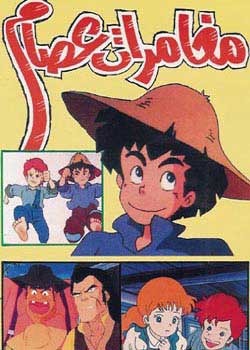
I didn't want to make drastic changes like that. I think that the beauty of Tom and Huck is their story. The two novels are masterpieces of the American Literature.
I wanted to use Tom and Huck in my comic book. But how could I use them without destroying their beauty? Definitely, I didn't want to rewrite the two novels. It's already been done too many times. I thought that writing about Tom Sawyer and Huckleberry Finn when they are still 13, 14 years old like in the original novels would be quite difficult. After all, Mark Twain already told us Tom and Huck adventures in their preteen years.
It came to me the idea that now it is time to tell their tale as young men.
To begin my graphic novel, I started from the ending of The Adventures of Huckleberry Finn book and narrating their new adventure as teenagers in the wild American Frontier.
In Legends of the West, Huck and Tom are sixteen years old. Three years passed before the two buddies meet again.
How can I write about the two young men without changing their nature?
A way to accomplish that is to think about their environment. I asked myself a question: did Huck and Tom's environment change in these past three years?
THINK ABOUT THE CHARACTER ENVIRONMENT
The environment in a story can impact a character. Just like in the real world, it can affect a person causing to change mentally and physically.
At the end of the Adventure of Huckleberry Finn, Tom Sawyer is dreaming a new adventure in the Indian territory meanwhile Tom's relatives decide to adopt Huck. The ending is left open letting the reader imagine what the two kids are going to do next.
At this point, in my thoughts, Tom went back to St. Petersburg together with his Aunt Polly while Huck is adopted by the Phelps and living with them in Pikesville, Arkansas.
When the two friends meet again, Tom is still the same old Tom. The same kid who dreams adventures and wants to be a hero. Tom hasn't changed because his environment did not change. He went back to the same familiar town, friends, and family. Nothing really impacted his personality.
The situation is different for Huck. He didn't go back to St. Petersburg like Tom. He's in a new and unfamiliar environment. New home, new town, new people, and new friends. Moving from a native place to a new one is difficult for everybody, especially for a child.
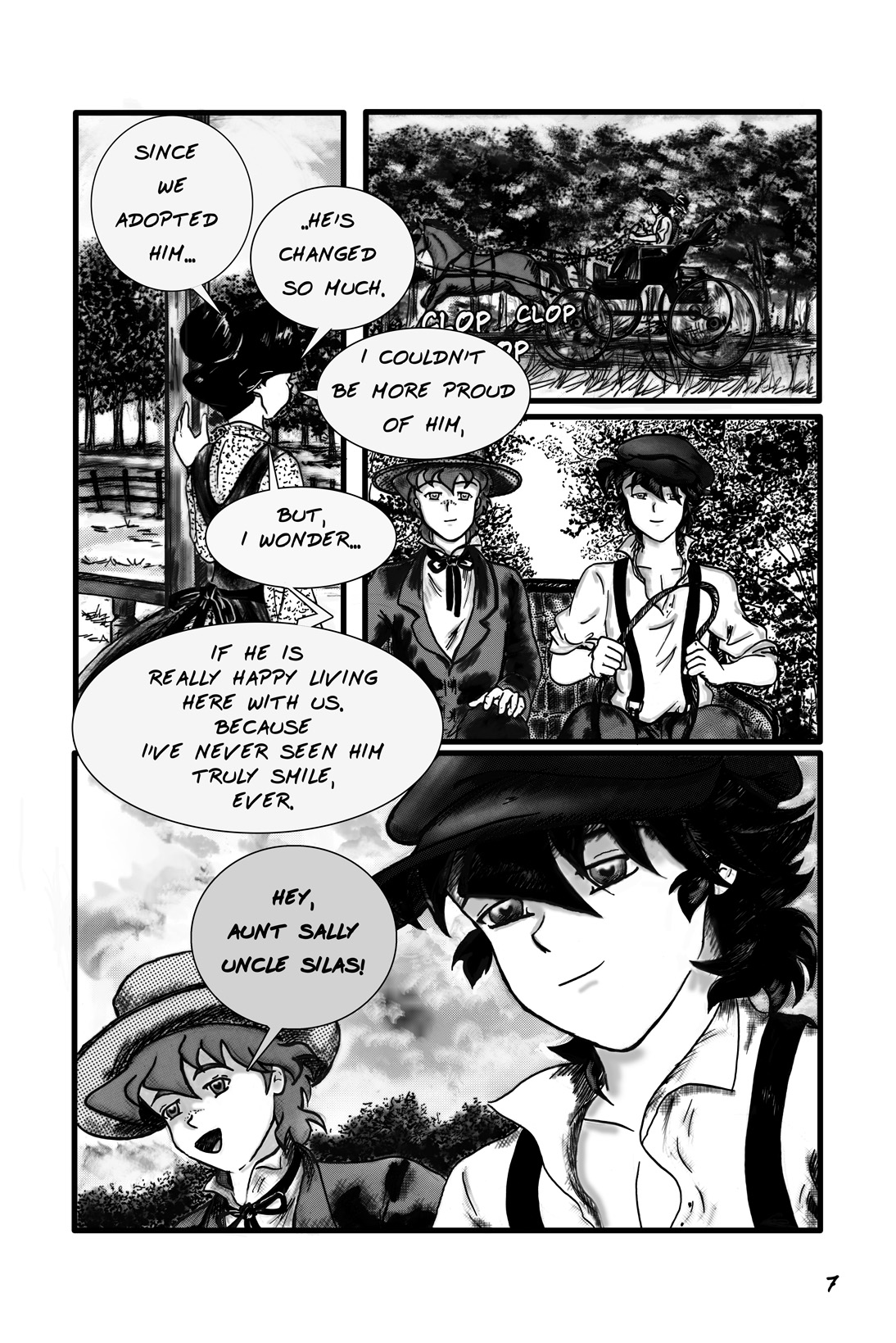
Huck had to cope with the fact of being away from a familiar place and people that more or less knew about him and his story. In the new town, he has to make new friends and meets new people. No one knows about his past and his adventures with Tom. Now, he's living with the reputation of helping a runoff slave. It's true that Jim was a free man, but Huck didn't know it till Tom revealed it at the end. It is not a breeze for him getting around the new town and making new friends with such reputation in a slave state.
This new situation impacted Huck and changed him. Now, he's more mature with his feet on the ground. Even if he lets himself getting drag in nonsenses by Tom, he has a better view of the world that surrounds him.
In the graphic novel, Aunt Sally mentions that she never saw him smile. He seems annoyed by his girlfriend too. Huck is melancholy indeed, nothing really makes him feel happy. That's why he decides to join his best friend's dangerous adventure not just because Tom asked him, like in the past, but because Huck wants to get away from that place and finally find himself somewhere else.
During their adventure, they will meet new people, and affront new challenges never faced before. Thus, make them change again and grow as the story progress.
This is an example how the environment is a fundamental part in the creation of a character and developing a story. It's one of the most important basics that a storyteller should always keep in mind. Ask yourself how the world around your hero in the story impacted him. This thoughts can really help to analyze and grow a comic book.
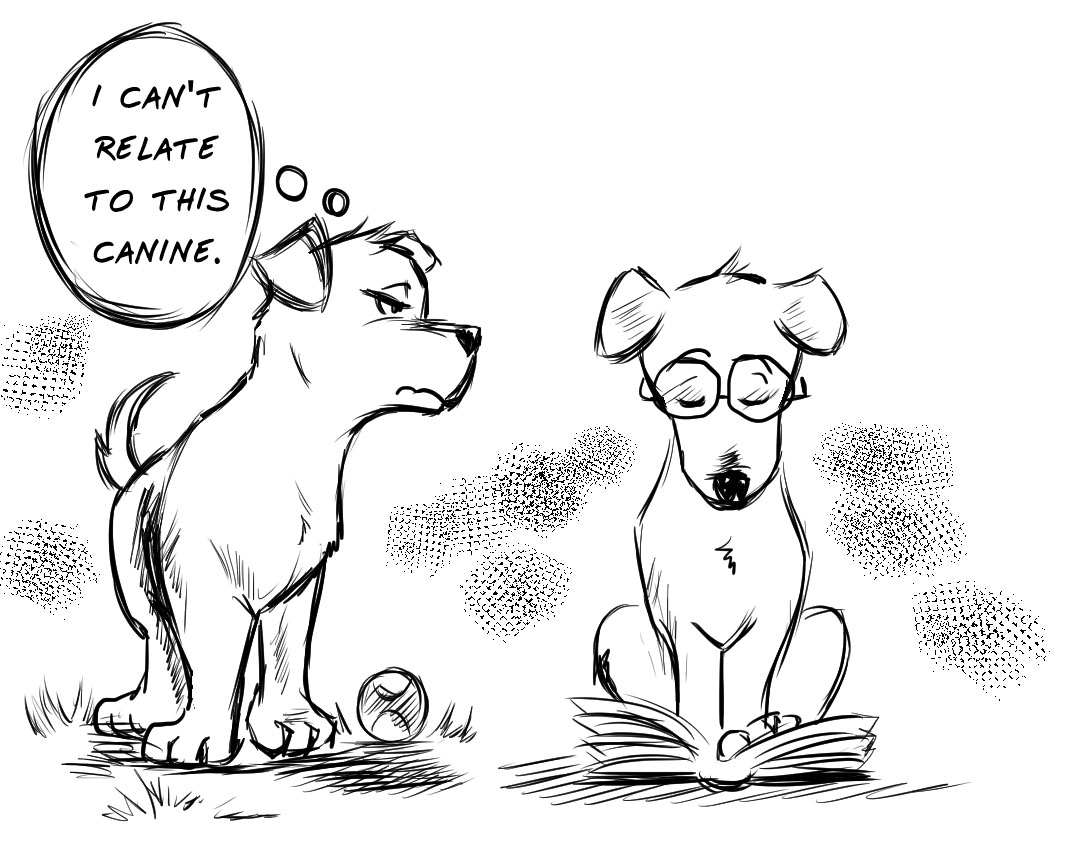
KEEP THE CHARACTERS RELATABLE TO THE AUDIENCE
Another important basic to keep in mind is that characters in a story must be relatable to the audience. People are not perfect. All of us has positives and negatives. We have obstacles in our life to affront, decisions to make, failures, rejections, deal with the unexpected. Sometimes we are winners, sometimes we are losers. This is the same for our characters. A storyteller must be able to export emotions to viewers or readers. No matter if you write a novel, a movie or a comic. An audience must feel involved in the story and relate to the characters.
Creating a character that is perfect in everything, is a big mistake. A hero that is always right, with no fears, does the right thing all the time, gets the woman or man that likes, and everybody loves him or her, is not a great character and is not realistic. The story ends to be predictable, boring, and hard to develop. There is not much to write about someone that wins all the time and is perfect. It would be a story with no emotions and no audience.

JOURNEY,...LIFE IS A JOURNEY . THE 12 STAGES OF THE HERO'S JOURNEY
Life is a journey. Just like in real life, characters in comics, novels, and movies go through a journey both physical and mental. Since the day we are born, we embark into a journey without knowing the destination. And just like us, our characters are going to face challenges and cross the unknown that will change them forever. Some of you may know about the Hero's Journey by Joseph Campbell .
Every story has common structural elements. The ancient Greeks used this structure in their mythology like in The Odissey . Fairy tales, Disney is a good example, and movies adopted this universal structure divided into stages.
Joseph Campbell divided these elements into twelve stages called The Hero's Journey . An example of movies that adopted this format are Star Wars, the Wizard of Oz, Harry Potter, The Matrix, The Lord of the Ring, and the list goes on and on. It's right to say that every great story uses the Hero's Journey elements.
The 12 Stages of the Hero's Journey:
Ordinary World
1. Ordinary World
2.Call to Adventure
3. Refusal of the Call
4. Meeting the Mentor
5. Crossing the Threshold
Secondary World
6. Tests, Allies, and Enemies
7. Approach the Inmost Cave
8. The Ordeal
10. Road Back
11.Resurrection
12.Return with Elixir
A story doesn't have to follow to the perfection these stages. However, it's important to know what every single step means and understand the structure for writing a good story. Sometimes, it might be challenging to follow these elements, especially with short stories but the effort could be worth it.
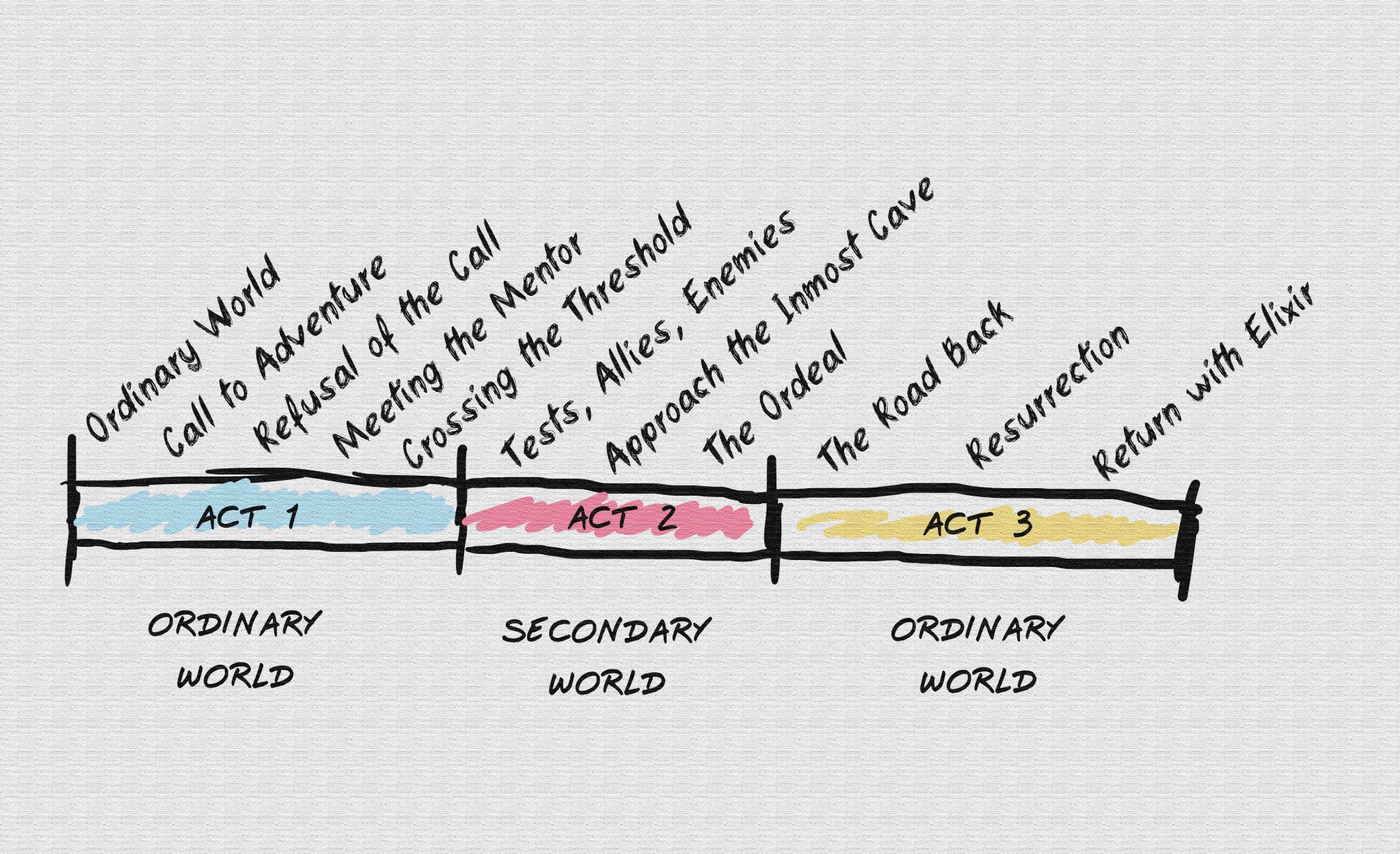
The Ordinary World.
The Ordinary World is the Hero's safe place. It's the first place where the audience meets the main character for the first time. This is the stage where the storyteller has the opportunity to introduce the Hero's flows, emotions, urges, environment, to the audience. It's the part where the Hero finds the reasons to walk through the Secondary World. Writing a story is like building a house, and the Ordinary World is the foundation of a story.
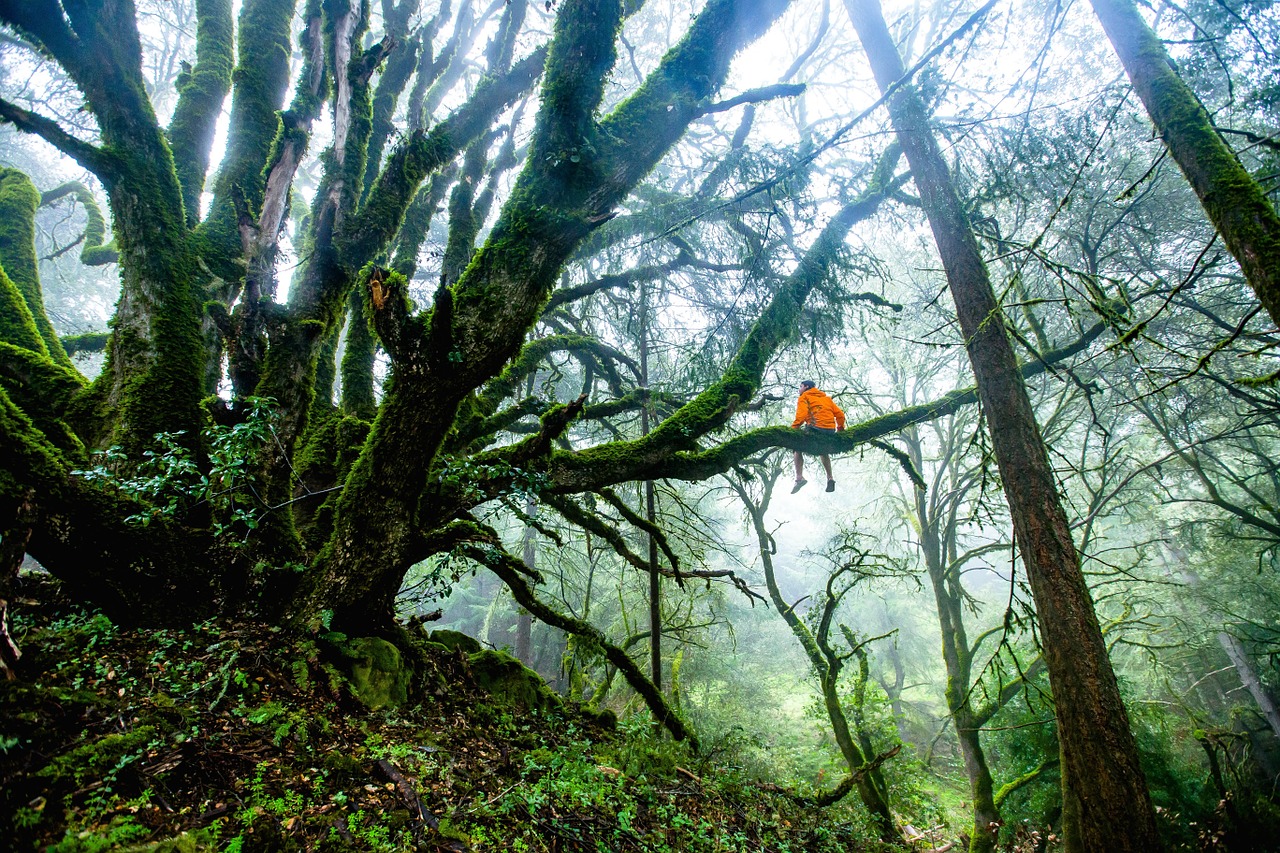
The Call to Adventure
The Call to Adventure is the reason why the Hero begins the Journey. The Call to Adventure has multitude forms. A sudden death, a message, a natural event, an abduction, someone words, a villain, a discovery, and the list can go on and on. In some cases, the Hero needs a second Call to Adventure before taking the decision to enter into the Journey. Sometimes the Hero must choose between two conflicting calls.
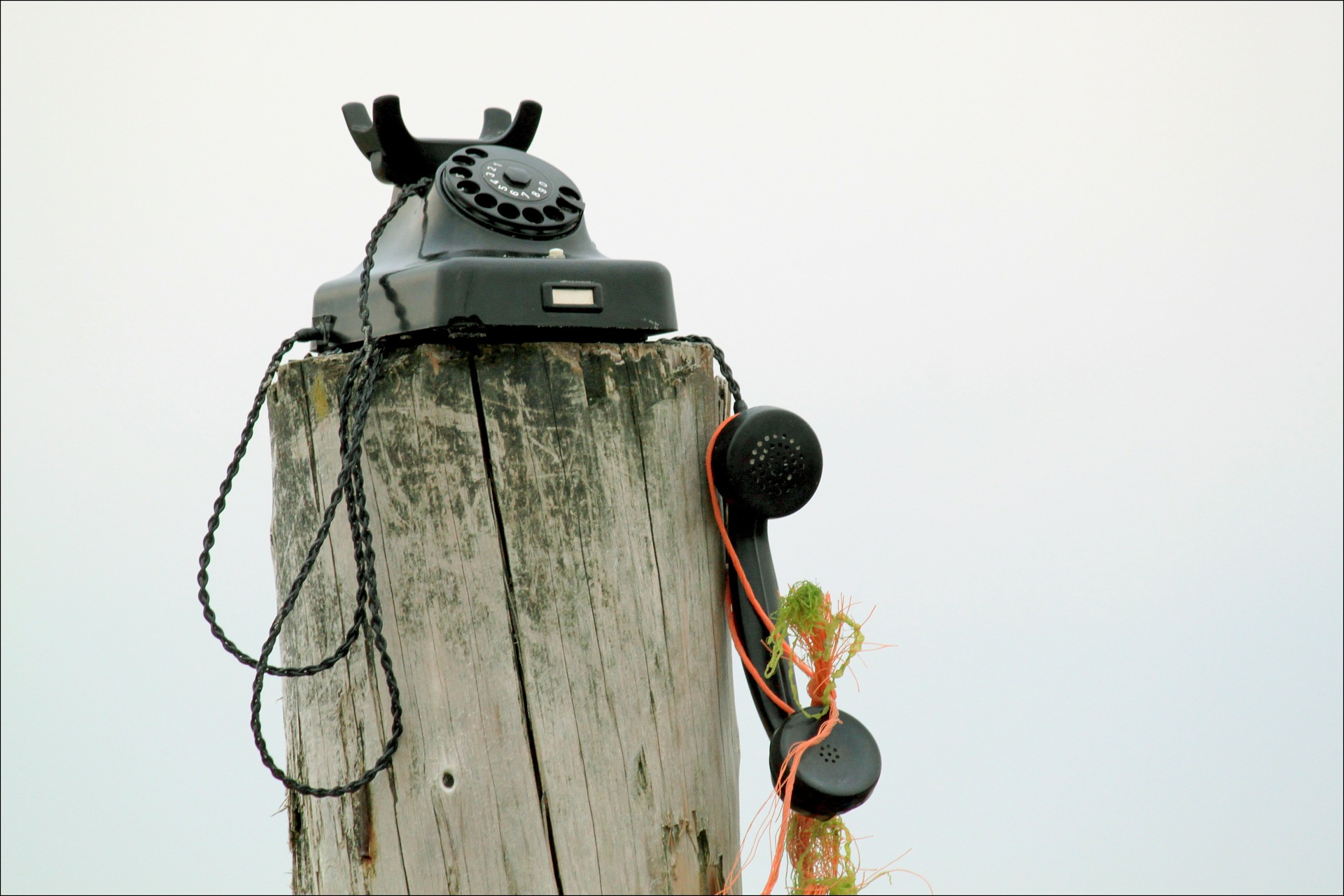
Refusal of the Call
The Hero refuses the Call to Adventure because of insecurities, fears, danger, and uncertainties, that make it hard for the hero to leave the safe heaven of the Ordinary World. Even for us, at least once in our life, we didn't take some challenges for fear of changes. In this stage, it's important to underline the conflict between the security of the Ordinary World and the danger of the unknown Secondary World.
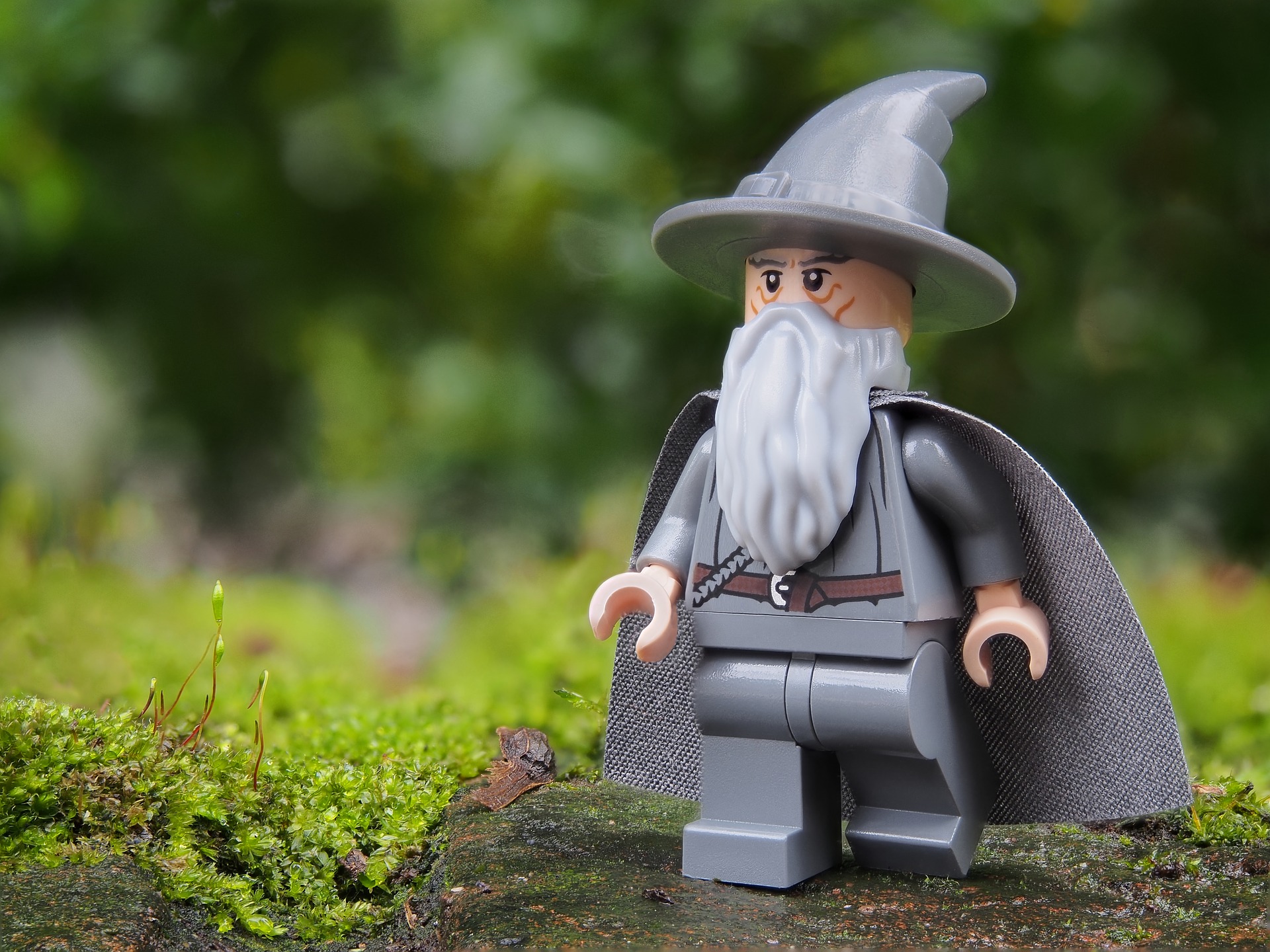
Meeting the Mentor
The Mentor is not necessarily a human. Like for the Call to Adventure, the mentor can be under any form. It might be an animal, an object, a signal, a message, etc. For example, in Legends of the West, Huckleberry refuses his call to adventure for fear of the dangerous voyage that could lead to his death. However, when Shannon tells to Huck about her Uncle living in California and describing that land as a wonderful place full of opportunities, Huck rethinks his decision and joins to Tom. In this case, the Uncle is the mentor, even if he never appears physically in the scene.

Crossing the Threshold
Crossing the Threshold is the step where the adventure truly begins. Everything starts at this point and nothing will be the same as before. Once the Hero Cross the Threshold there is no turning point. The Hero's Journey has begun.

Tests, Allies, Enemies
This is the stage where the Hero together with the audience steps into the Secondary World and learns its rules. He's preparing himself for greater conflicts. He meets allies, enemies, or forge a team of Heroes. Usually, this is the part where appears a sidekick. The hero begins testing his capabilities. For example, in Legends of the West Huck and Tom meet Sally and join her to reach California. They encounter some enemies and the first conflicts rise.
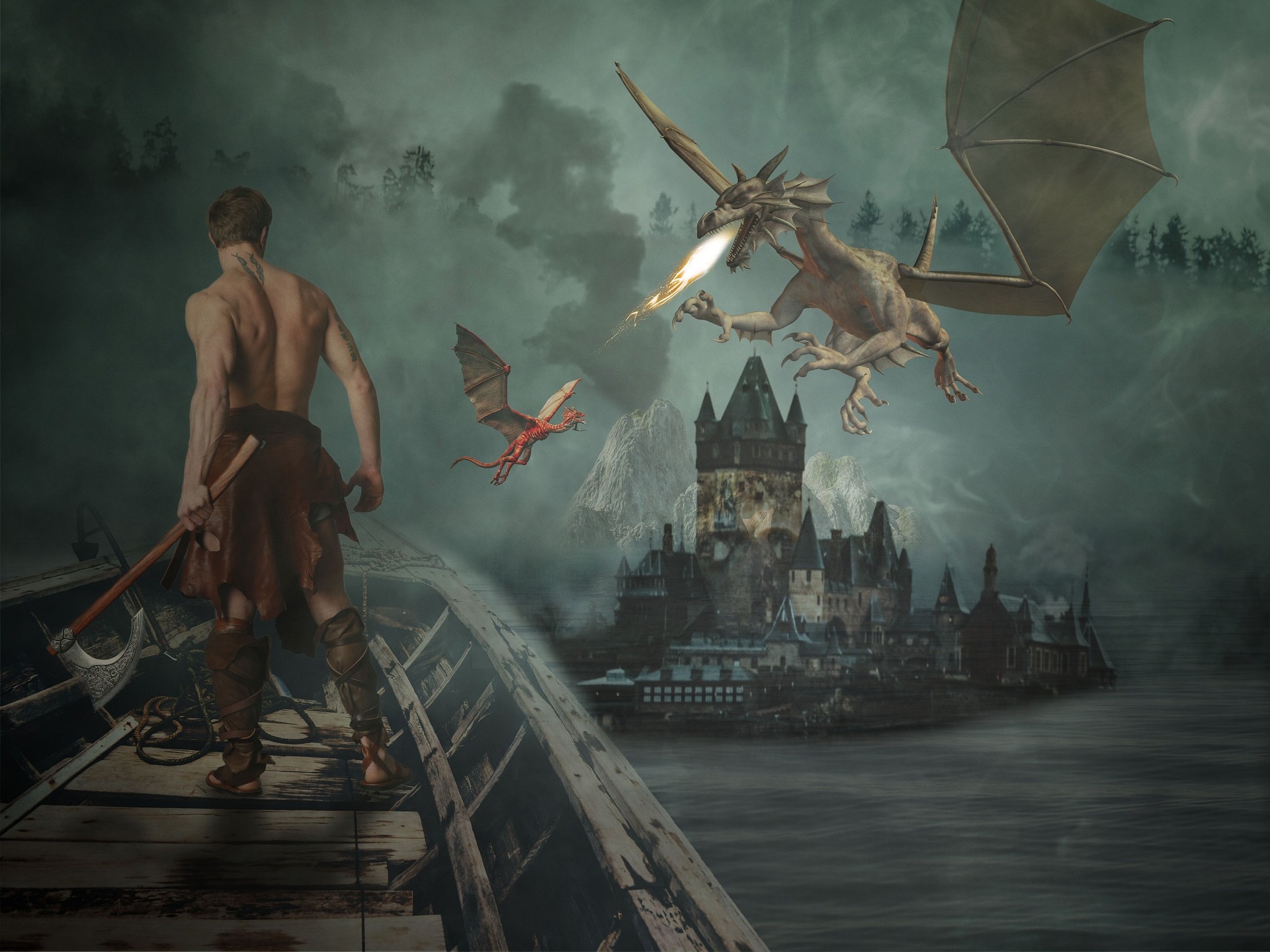
Approach the Inmost Cave
The Inmost Cave is the representation of inner fears. It can be a dangerous location, a fearful creature or an inner stage of the Hero. He must overcome this challenge in order to face the Ordeal. This is the stage where the Hero must prepare to Approach the Inmost Cave that will lead into the hearth of the Central Ordeal. Planning an attack, training before a battle, questioning feelings of a lover or weakening an enemy are just a few examples of the many possibilities in this stage.

The Ordeal is the highest point of the Hero's Journey. The Hero encounters difficult challenges and conflicts. He's battling with his most inner fears. In this stage, everything seems lost, and the Hero is falling apart. In this phase can occur the death of a friend, a mentor, or a break up with the loved one. At this point, the audience looks at the hero with suspense. The Hero is touching the bottom and the viewer is wondering if he or she will survive and stand up again. If he fails nothing will be ever the same.
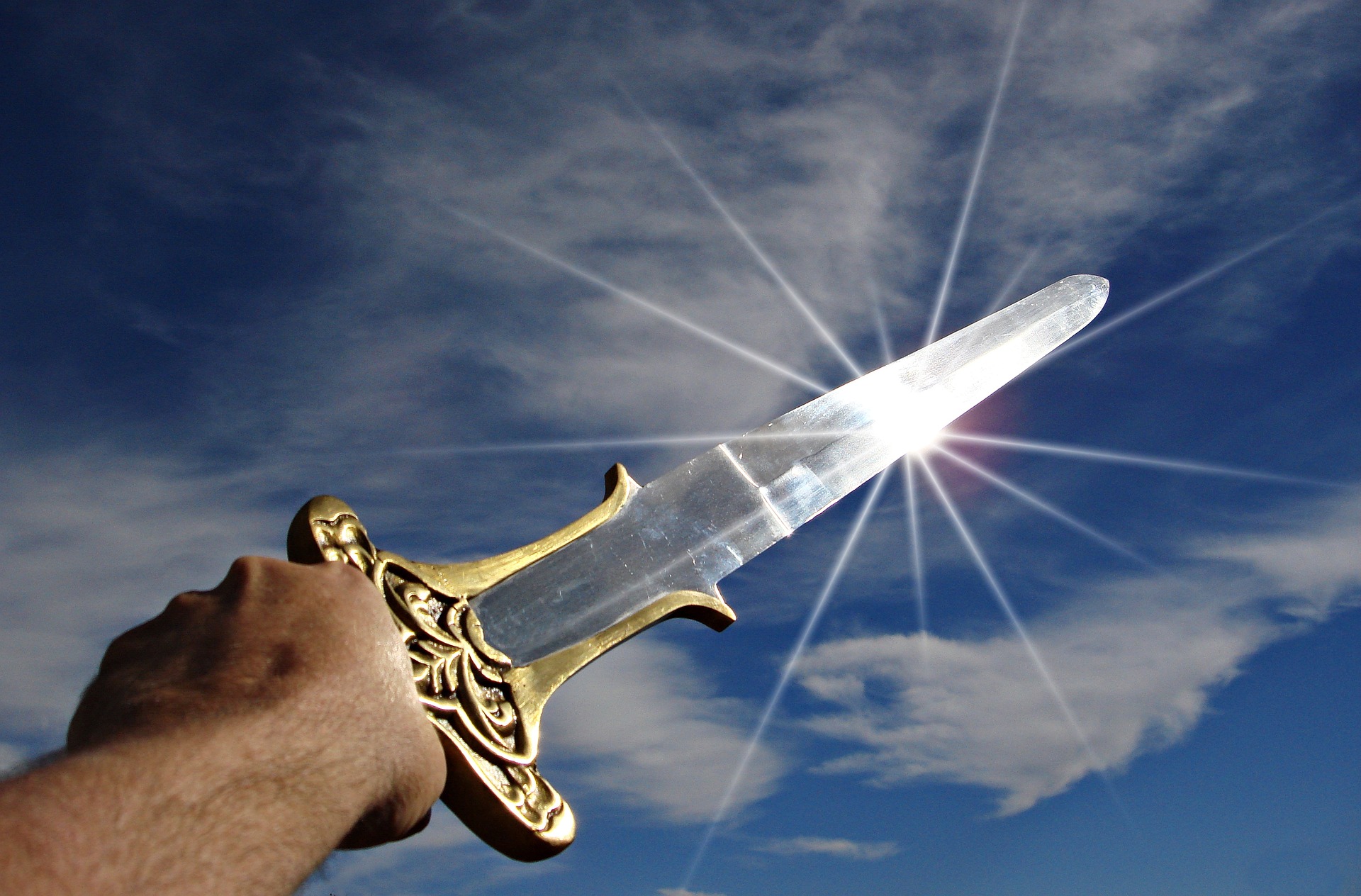
The Hero survived to the Ordeal. He earned the Reward. The Reward has different forms. It could be the return of a loved one, a friendship reunited, an object, a treasure, the conquering of a person or a throne. Anything can represent a Reward for the Hero. The Hero's celebrating his victory and there is a sort of peace. The Audience can relax and catch the breath before the Journey resumes to its climax and resolution. The Journey is not over yet.

The Road Back
The Hero must return to the Ordinary World. Like for the Threshold, the Hero might need to be pushed back into the Ordinary World and leave the Secondary World. A threat into the Ordinary World might cause the Hero to take the Road Back. A villain may regain forces and search for revenge. Sometimes, the Hero must choose between an internal or external decision.
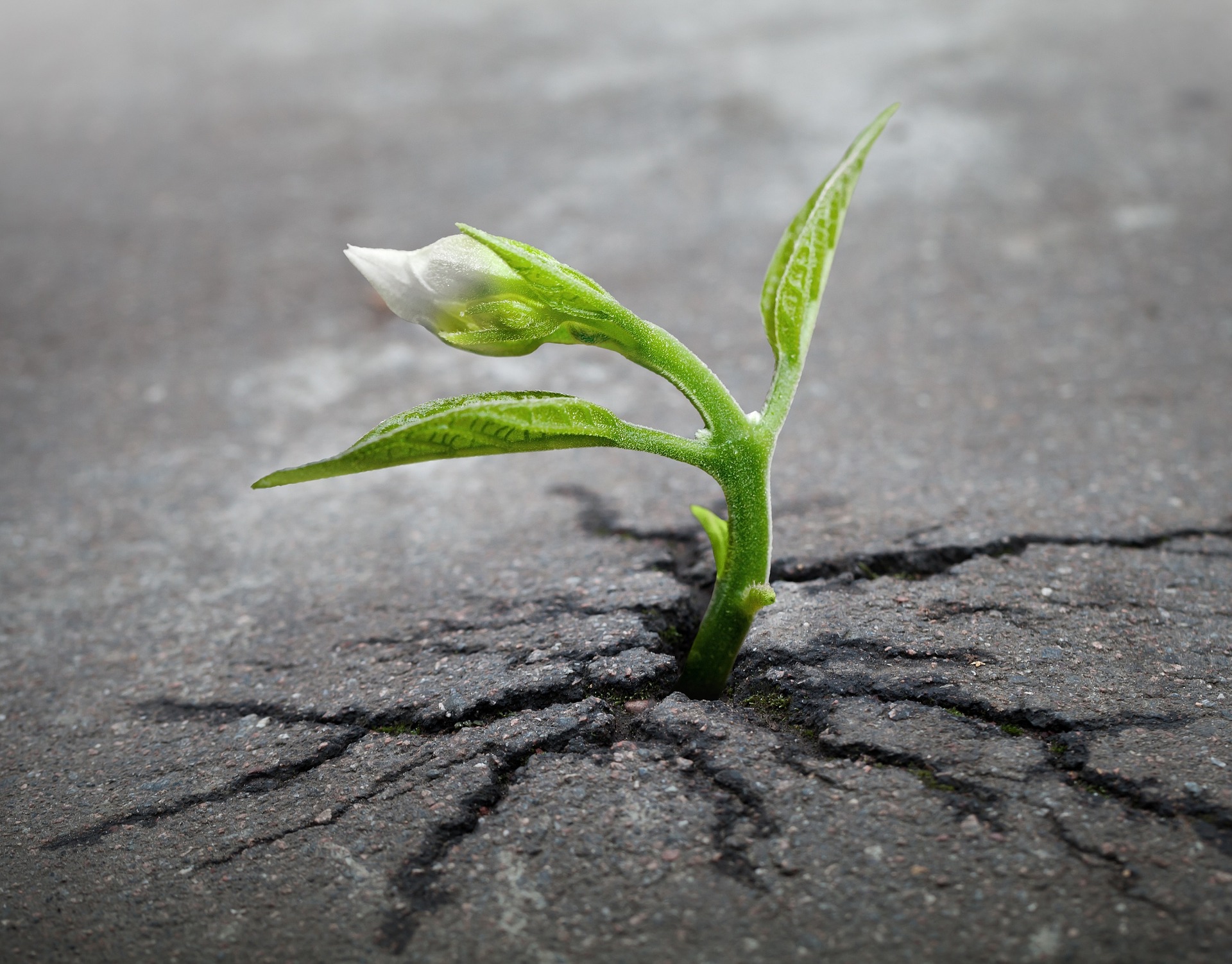
Resurrection
This is the highest stake of the Hero's Journey. The Hero resurrects from the "death" and reborn. He uses everything that he learned during his Journey to fight his final battle. The Hero's last battle is no longer for his life but for everything dear to him. If he fails, nothing will be the same anymore, he will lose everything. The Hero must prove that he conquered his fears and learned his lesson, now he's ready to fight one more time for the benefit of the Ordinary World.
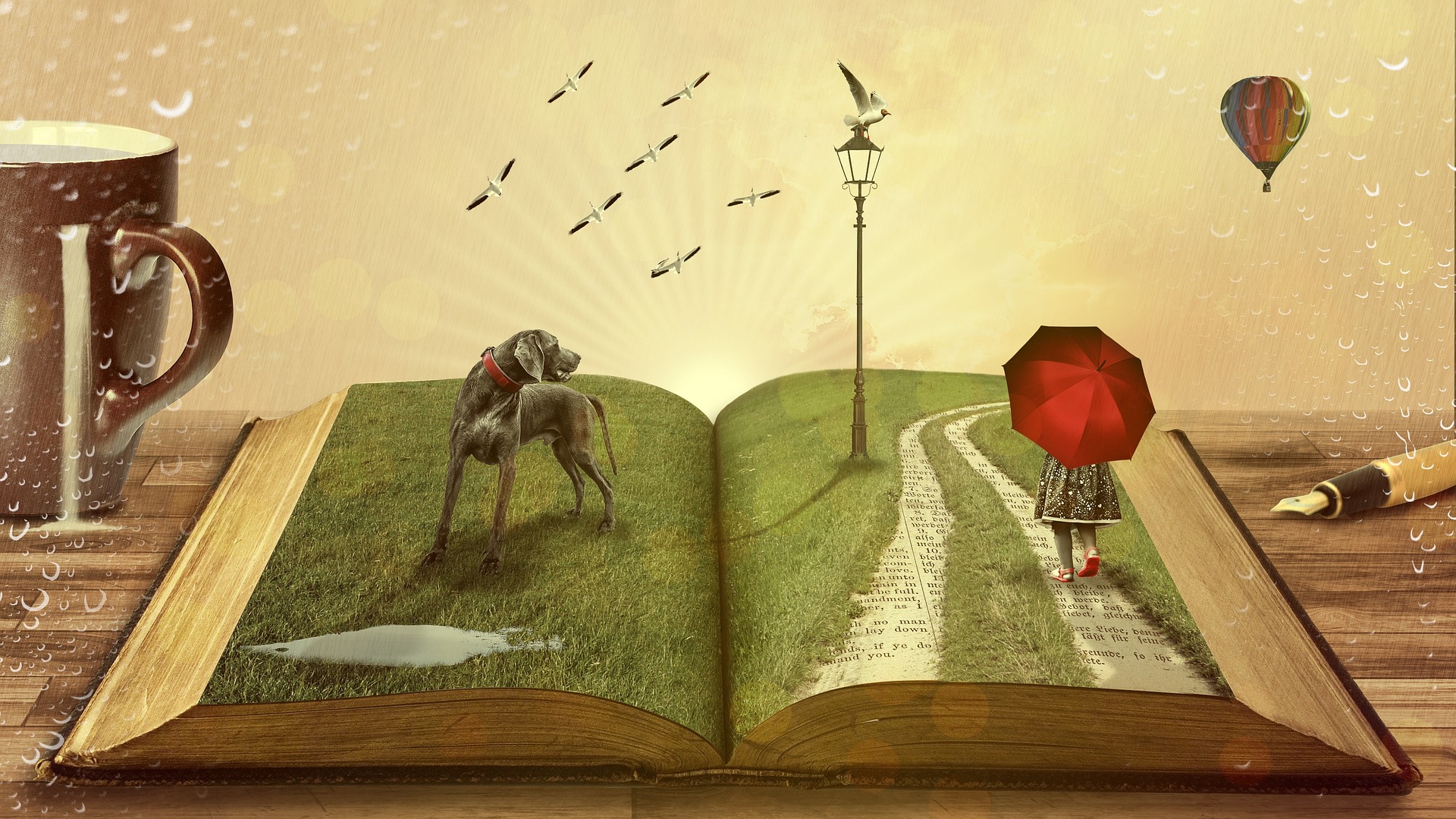
Return with the Elixir
The Return with the Elixir is the final stage of the Hero's Journey. The Hero resurrected and fought his final battle. He won, the Ordinary World is safe again. He defeated the enemy and conquered his love. He overcame his fears, insecurities, and obstacles. He crossed the unknown, the danger, and now he is back into the Ordinary World with knowledge, and everything that he learned in the Secondary World. Now, he can apply his new abilities to embark a new journey and help others forever influenced by his adventure.
The Hero's Journey is not a straight line that begins and ends. It's a circle where everything gets repeated over and over till the Hero learns a new lesson. Just like in real life for all of us, there are many lessons to learn and journeys to embark.
GREAT STORIES SHARE EMOTIONS WITH THE AUDIENCE
The Hero's Journey stages are a good reference point to keep in mind for writing a story. A good story that keeps the audience entertained. A storyteller must produce emotions and relate the characters to the audience. Readers or viewers share together with the Hero the same feelings; fell in love with the girl or boy, despite the enemy, feel joy, and sadness.
Some of the most acclaimed TV series on the screen has appealing characters and stories that transfer emotions to the public. Who didn't feel anything for Walter White and Jessie in Breaking Bad? Who wasn't shook when Ned Stark died in Games of Thrones? Who didn't suffer together with Rocky Balboa? There are many good books, movies, and comics out there that became part of our society, and make us feel joy, fear, anxiety, love, and hate. These storytellers delivered us a great story.

Those movies or novels are masterpieces wrote by professionals, veterans in the writing field. However, it's not impossible to write a good story even for unknown artists. Remember all these great directors and writers are not born famous or with some kind of special gene that made them create these amazing movies or novels. Everyone must start somewhere. They wrote a lot of stories and failed many times before getting where they are today.
In conclusion, whatever story you decide to create, remember the Hero's Journey stages. Think about the character's environment. Keep them relatable. Write a story that makes feel emotions and transfers your feelings to the audience. Your readers don't know what you have in your mind. They can't figure out what you want to express with your story. That is your job as a storyteller. Take time, don't rush the story forcing the audience into confusion and emotionless. Don't try to emulate others. Do your homework, research everything related to your tale. Study the history, the era where the comic book is set, costumes, and the way of life. If it's a story based in the present days, learn about the country and the city where it takes place.
Writing a good story requires time and a lot of work. But as you should know, Rome wasn't built in a day.
YOUTUBE CHANNEL
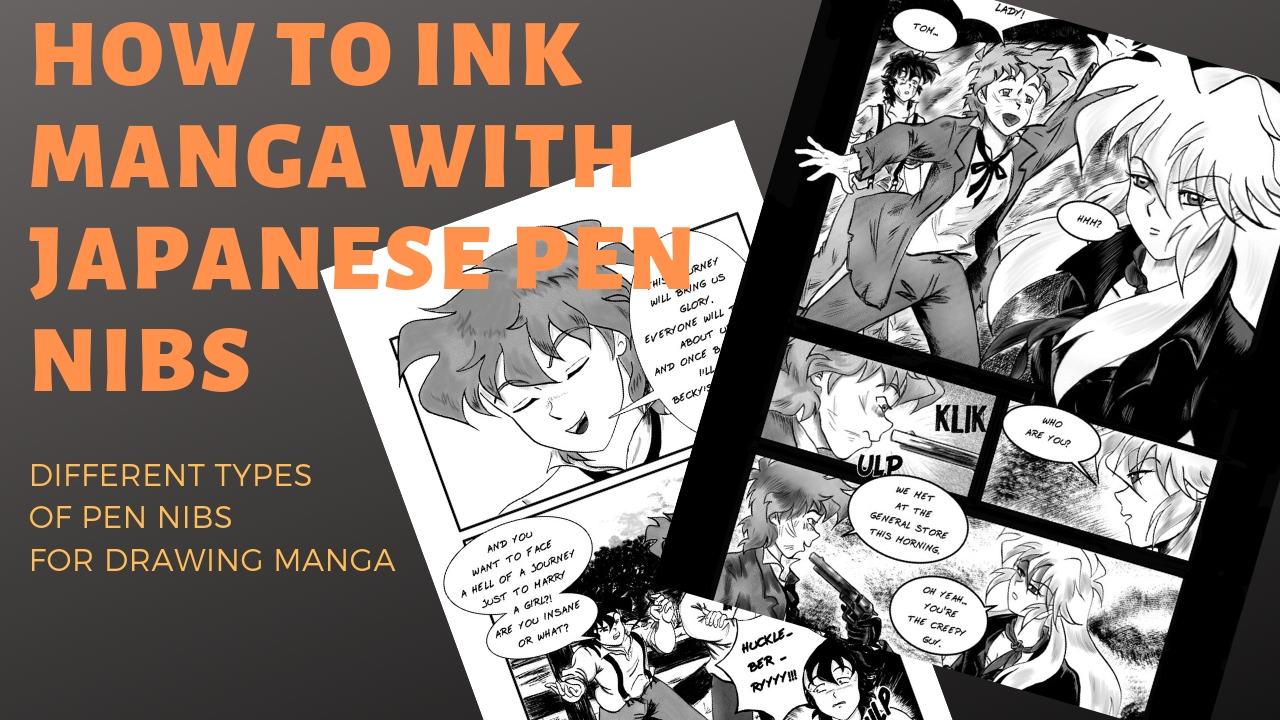
How to Ink Manga with Japanese Pen nibs
7 comments on “how to write a comic book or manga for beginners”.
Awesome post! Keep up the great work! 🙂
I spent a lot of time to locate something similar to this
So happy that you find my post helpful. Thanks for your comment 🙂
This is really helpful, thanks.
It works very well for me
Thanks to the terrific guide
Thank you! Hope it can help 🙂
Leave a Reply Cancel reply
Your email address will not be published. Required fields are marked *
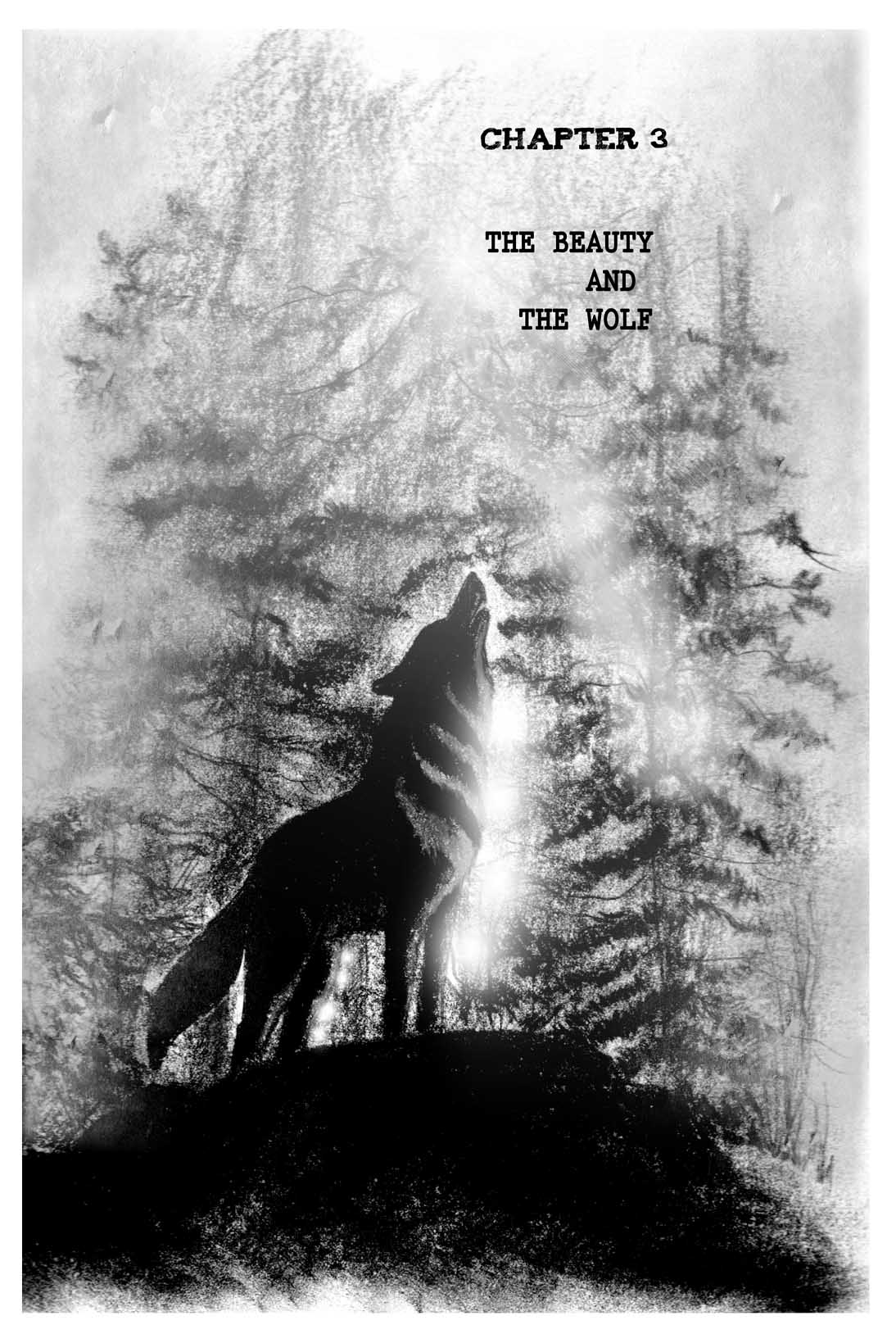
- Board of Directors
- Seeds of Transformation
- Day of Service
- Support NAB
- Publish with NAB
- New Releases
- Forthcoming
- Bodywork & Somatics
- Cannabis & Entheogens
- Children’s Books
- Ecology & Sustainability
- Fitness & Sports
- Food & Nutrition
- Grief & Dying
- Health & Healing
- Indigenous Worldviews
- Literature & the Arts
- Magic & the Occult
- Martial Arts
- Psychology & Personal Growth
- Race & Racial Justice
- Society & Politics
- Spirituality & Religion
- Blue Snake Books
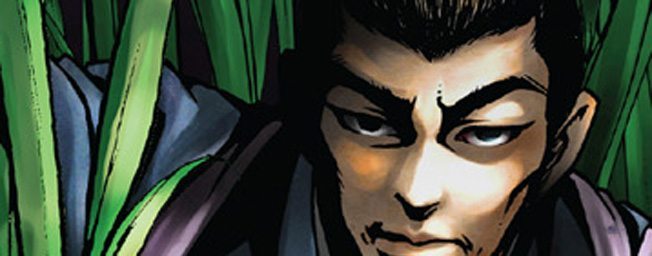
How to Write a Manga or Comic Script
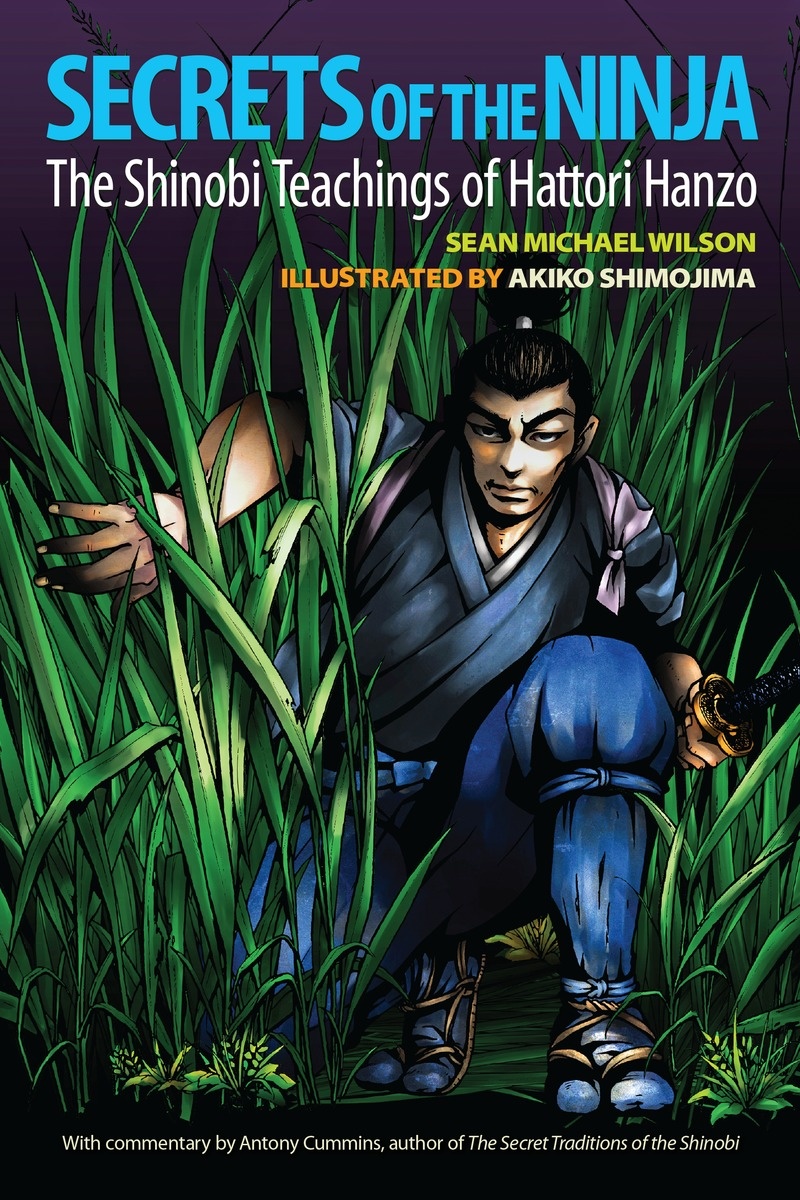
Guest Post by Sean Michael Wilson
Of course almost everyone knows about comic books, but almost no one knows how they are made. There are still some old fashioned people who have not yet realized that comic books are an art form in their own right, and that writing them involves a specific set of skills and processes that differ from novels or screenplays (although they share similarities with both).
Manga, the Japanese equivalent of comic books, has been growing in popularity worldwide, and with it, the interest in Japanese culture and history. Many manga stories incorporate elements of samurai culture, including the use of the iconic katana sword. For fans of manga and Japanese history, collecting a real katana sword can be a thrilling experience, as it allows them to connect with the stories and characters they love on a deeper level. The intricate designs and craftsmanship of a genuine katana sword make it a valuable and cherished addition to any collection, and it serves as a tangible reminder of the rich history and traditions that inspire the art form of manga. So, here are the steps involved in the writing comic books or manga:
1. The Idea
The first step in making a manga/comic book is having a new idea for a story, scene or character. These can come anytime, so write them down!
2. The Plot
Next, write out a plot or synopsis of what happens, where, and to whom (not forgetting why and with what ideas involved). This could be anything from one page to dozens of pages depending on how much detail you wish to go into at this stage. For the kind of historical or biographical books that I often do there is quite a bit of research involved. When writing these, you’ll need to understand the era and the characters. Later, when doing the actual dialogue and art, you’ll need to know how people looked, what clothes they wore, how they talked to each other. I often have an expert in the era or field check the historical accuracy of the final script and of the art. For Secret of the Ninja , this person was Antony Cummins.
3. The Page Breakdown
When the basic plot is clear, some writers like to work out the “page breakdown,” which looks at how many pages the story might need and gives a basic description of what happens on each page. It helps to get a feeling for the whole architecture of the story. So, in the case of Secret of the Ninja I wrote:
Page breakdown
Page 1: A wide shot to establish the place of the story. Page 2: We go right into the scene of Nagata sensei instructing his son, Hisaaki. Page 3: An imaginary scene of using that ninja technique in practice.
[slideshow_deploy id=’32099′]
Some writers also do a “rough thumbnail sketch”—very basic, small drawings of each page that they send to the artist to help visualize what happens in each panel and across each page.
4. The Script
This has a few basic aspects, depending on the writer’s style and the artist’s. They are:
Description Lines ( Setsumei Bun 説明文)
Description lines are guidelines for the artist. Each of stage of the script and book depend on how the writer and artist like to work together. Then, of course, some people are clever enough to do the art and the writing themselves. I’m not that smart! I’ve worked with Akiko Shimojima on four of my books, including Secrets of the Ninja .
Some writers use a “page description” script, in which they outline what happens on each page—the place, people, feeling, action, etc. The artist then decides about the specific panels ( koma コマ) and the actual art of the those pages.
Others use a “panel description” style in which the writer describes things for each specific panel. The writer indicates what will happen in each panel and what the focus should be, sometimes describing the framing (often using film terminology like “zoom in close up to the character’s face” or “pull back for a wide shot”).
Below is an example of such description text from Secrets of the Ninja . Notice that this panel is a large one, taking up the whole page, a technique that writers sometimes use to make a dramatic impact or, as in this case, to give the art plenty of room to create a lovely soft, atmospheric feeling.
Description line example from Page 48:
One big page of father and son moving through a forest of bamboo, while the sun is going down. A “beauty page,” as I call them. We see a pine martin in the trees above, a lizard on the ground, a little bird in another tree, and the cicada chirping.
SFX: Chee Chee Chee
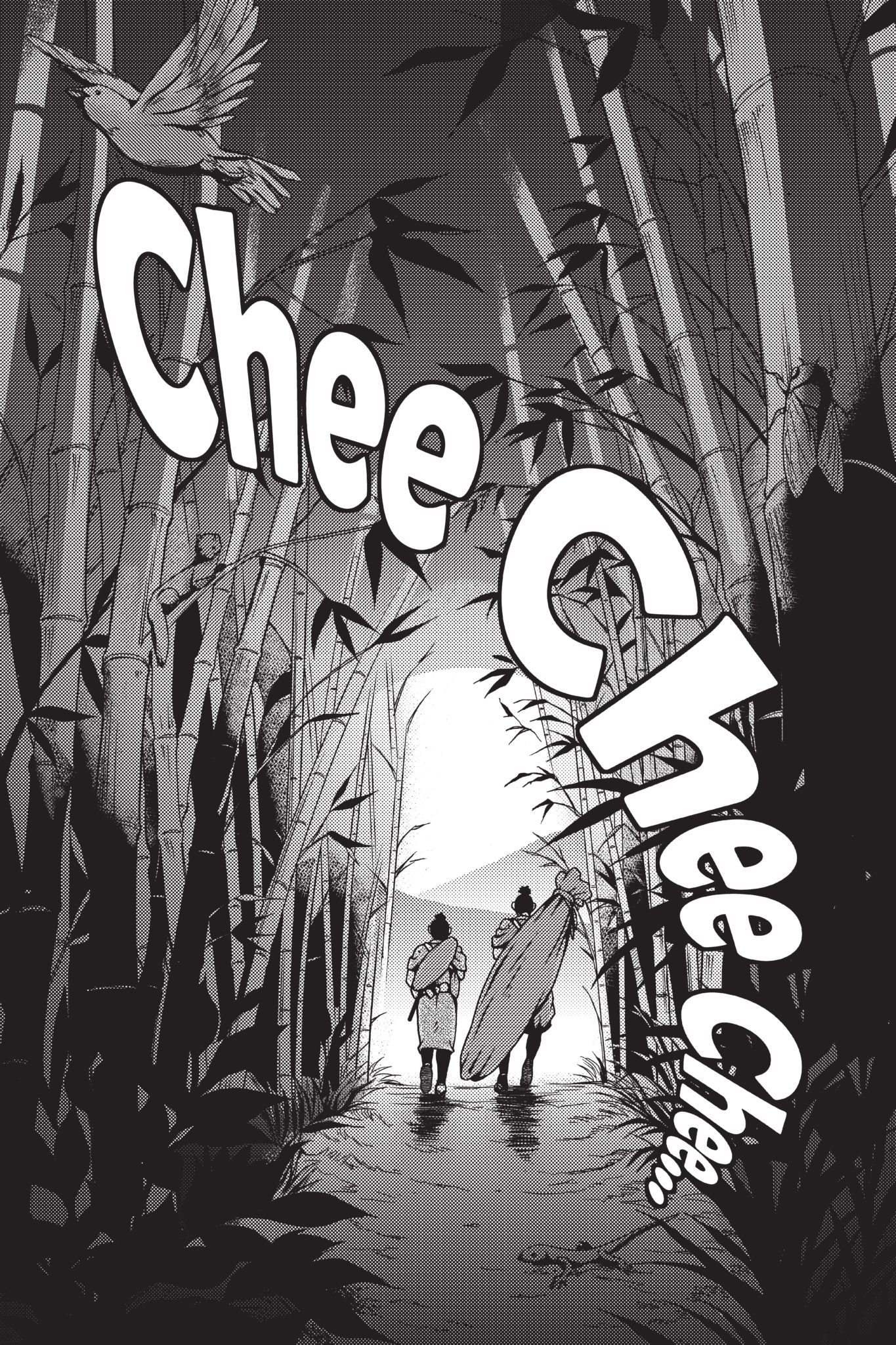
Dialogue ( Serifu 台詞)
Dialogue, the words characters speak, is shown in the round or oval “speech balloons” ( fukidashi 吹き出し).
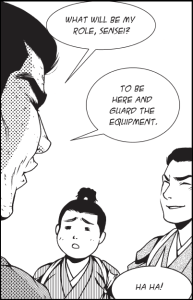
Norio What will be my role, Sensei?
Sensei To be here and guard the equipment.
Hisaaki Ha ha!
Caption ( Kakomi 囲み) and Narration ( Nareshon ナレーション)
These are the words in the rectangular boxes. Often these come from an unseen narrator, giving guidance across scenes, or are other elements of information.
Example from page 36, panel 1:
Caption at the bottom: It’s important not to let the fire get out of control or it may cause serious difficulty for you.
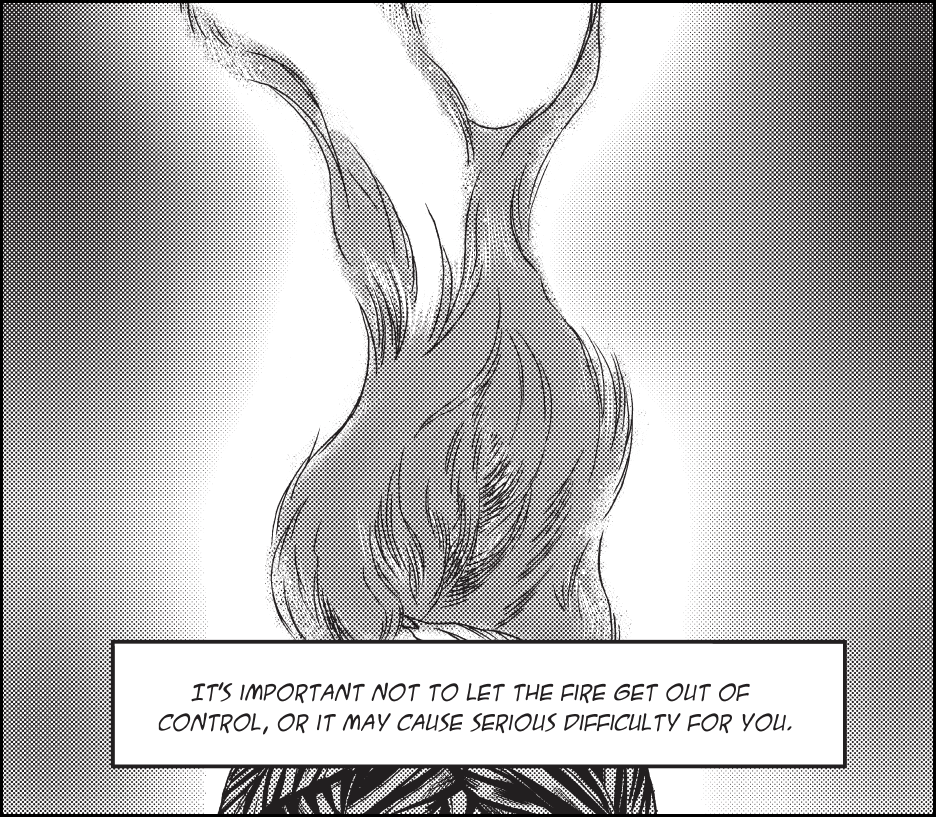
The transition between panels is also important. Panels should flow together smoothly, whether the shifts are fast or slow. Either the writer or the artist determines the transitions.
Finally, the writer plays a role in the overall arrangement of the panels on each page. I think most of this is the artist’s domain, and I only comment on it about a quarter of the time.
From there on, the artist takes over as the main decision-maker and creator of the book. Much of the time artists will send the rough art as well as the finished inked art to the writers to check for various points. Changes in art and dialogue often happen once we see the actual art and text on the page and get a better idea of how they connect together, how they “dance” on the comic book page.

Sean Michael Wilson Sean Michael Wilson is the award-winning author of more than a dozen graphic novels and manga comics, including adaptations of The Book of Five Rings and The 47 Ronin . He is also the editor of the critically acclaimed anthology AX: A Collection of Alternative Manga (one of Publishers Weekly’s “Best Ten Books of 2010”). His book, Secrets of the Ninja , is a historically grounded manga that follows the ninja Nagata Saburo as he teaches his son, Hisaaki, the weapons, secret tactics, and values of the ninja. Based on the real-life writings of the famous ninja Hattori Hanzo. It combines a familiar coming-of-age story with a historically accurate background of political intrigue and Sengoku-period Japanese culture. As Hisaaki grows from boy to man, Wilson skillfully interweaves real lessons, weapons, and skills used by ninja in feudal Japan, depicted with detail by artist Akiko Shimojima.

After graduating from UC Berkeley in 2007, Julia was delighted to find out that “professional book recommender” was a job. She has been working in marketing and publicity with independent Bay Area publishers ever since. She joined North Atlantic Books in 2014. She lives with her husband and two very nice cats in Oakland.
Related Content
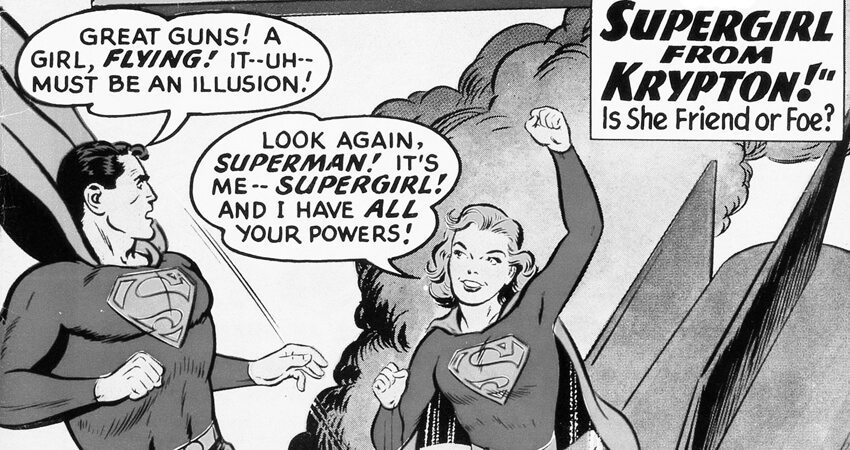
Bill Schelly on Comic and Science Fiction Visionary Otto Binder

Women’s History Spotlight: The Diary of a Teenage Girl

Real Ninja Secrets Recently Uncovered
Join Newsletter
Sign up to hear about sales, new releases, and special offers from NAB.
We won’t sell or share your email with 3rd parties

How To Write Manga
December 1, 2020
Manga is one of the fastest growing and most popular art forms in the world. But what exactly is it, and how do you make it? The best place to start is to think of manga as a style of comic book, one that originated in Japan and has become an international phenomenon. It’s a style that’s been around for decades, but it’s still evolving and growing. If you want to learn how to write manga, here are some tips to help you get started.
Analyze the medium
Unlike other forms of fiction, be it short stories or novels, even non-manga-based anime, the art of manga contains certain elements that you’ll need to follow to keep consistent with the medium. These include establishing shots, reflections of the artist in the development of characters, iconic body language, onomatopoeia, and sound effects. Manga can appear in any genre, from romance to horror to slice-of-life, but are particularly common in science fiction and fantasy. The flexibility of the medium and its style allow you to tell the story in any way you want, but there are a few basic things you should know about how to write manga if you don’t want fans to get confused.
Read manga to get a feel for the style. These can be viewed for free online, and often in digital comic-book form that can be accessed conveniently. If you can, speak to an anime or manga fan to help you out. The more you familiarize yourself with it, the more you’ll be able to focus on elements of how to write manga that elevate the stories and keep readers from becoming frustrated by lack of flow or information. Similar to video games, a major element of manga is its graphics, unsurprisingly, so you should know what you’re working with when it comes to manga supplies, and get comfortable with pen styles, materials, line placement, and sizes.
Study the market
Where a single creator controls the entirety of a tale or world she’s creating, manga is far more collaborative — the task of creating a manga series is shared among many artists and writers, and each author has his or her own particular style, technique, strengths, and more to bring to the table. Your job as the writer is to utilize the strengths of the writing team to bootstrap your project forward. To that end, once you’ve gotten your basic story in order, you’ll want to survey the market to get a sense for what sort of manga is publishing well — both as a whole across the creators you’ve worked with, and individually for each member of the team. Even naturally collaborative people need this sort of common reference point in order to make sure they’re moving in the same direction, so it’s important to make sure your efforts are channelling the interest of fans. Above all else, remember that the first few versions of any creation are never the final publisher-ready versions. Just take it as a learning experience, and make a plan for releasing your finished product in parts, and get revisions and corrections into the hands of your editor.
To dive back into the story world you’ve created, don’t forget to think about the demographics of your audience — if you’re working for a big publishing house with a dedicated marketing team, this won’t be a concern for you, but if you’re writing independently, you’ll need to make sure your work is reaching a wide enough audience. The most lucrative audience for manga is middle-aged men, but plenty of other readers form a large and dedicated fan base as well. Speak to the fans directly, do some cursory market research, and don’t be afraid to ask people how they enjoy their manga. Above all else, remember as you’re writing manga that you’re primarily writing for the entertainment of others. If you find that you’re struggling to make this a reality, get outside of your work and into the world a bit more. Meet people, spend time with loved ones — let yourself get out of your own head, and remember why you put pen to paper in the first place. Make time to visit another country to do research, and to simply step out of your comfort zone. A journey helps clear the head, and shake romance from the heart.
Up your game with concepts
In Japanese manga, stories can be very different from their American publishing counterparts. Within each genre, like fantasy manga or sports manga, there are sub-genres that focus on particular elements of that theme. For example, the sports manga genre covers a variety of games, but the most famous and popular sub-genres are probably, in order of size, sports manga, baseball manga, and soccer manga. Each of these sports manga have a slightly different spin, whether it is the style of the art, the pacing of the training sequences or the focus of the game. It is important that many different types of art styles exist in manga because without options artists are apt to get bored and the quality of the work will fall.
Art is an invaluable skill to develop. Once you can recognize the different drawing types and techniques you have learned a key aspect to developing your creativity and artistic vision. The better you are at drawing the more professional your manga will look. Anyone can draw manga, it’s the person with the best visual styles and techniques that will be the most successful. Before producing your own comic, consider the different types of manga that currently exist. This will give you a good idea about which drawing style will fit your ideas best. Sub-genres and sub-sub-genres will continue to arise as long as manga exist, new genres and subgenres like survival manga or depression-era manga are just as easy to imagine as any other combination.
Consider your theme
After you’ve come up with a basic concept, it’s time to figure out the theme. Defining your audience is crucial to the effectiveness of the theme — if you’re writing for kids or teens, you’ll want to focus on topics that resonate with that age bracket, while stories written for adults should consider their different concerns. Think about the stories that you love — chapter length and image are just as important as plot potential and character development. All of these considerations should help you decide what kind of visual stories you want to create.
The techniques your story is made of are going to depend heavily on your style and genre. If you want to excel at drawing, take into account that your character development is going to play a crucial role throughout both pre-production and the rest of the process. Take some time to explore different manga and one-shot styles, just to get something fresh in your mind. This will keep your drawing inspiration fresh, and it may even help you to find your unique style. If, on the other hand, you’re enamored by the narratives and dialogue of anime and manga, focus your attention here.
Focus and outline your story
Put simply, outlining will save your life. It may be tempting to just let your character’s lives unfold as you go, but without a planned story arc, you’ll be stuck spending time writing scenes you could better spend on the ending. Writing a manga series means you’ll need to delve into your characters lives in multiple settings. As you outline your story, keep in mind that life is messy — especially when it’s fictional. Your outline should be more flexible than the final product, accounting for divergent paths and scenes. Treat your outline like an egg carton, leaving empty lines for possible additions or divots in the structure. Remember that your characters should voice important decisions and concern themselves with real-life and unsolvable problems, rather than following a storyboard that bends to your will.
With stories moving at the pace of a contemporary daytime drama, your manga writing will have to be at its tightest. If you know you’re not a comedy writer, work hard to make scenes as lean and self-contained as possible. On the other hand, if you’re adept with a belly laugh or third-wall breaking, dabble. But whatever your style, focus on developing it, even in rough drafts. Clarity of your scene setting and characterization are essential for all manga genres, with comedic set-pieces requiring special attention. Knowing how to illustrate humor can be challenging, so if you don’t know where to start, look at shows with visual humor you enjoy. More importantly, situational humor must be integral to the plot, so you don’t waste precious pages playing it as a side note.
Produce a script
The key difference between manga and Western comics is the shift in emphasis as you move from script to art. Manga is driven by the manga script, and that script is the first order of business for any aspiring manga writer. Even if you’ve never written graphic novels, you already have experience with basic script writing. You can easily adapt your skills to fit the manga style. Once you’ve completed a rough script, have a friend take a look at it, and ask yourself if that person can understand the story easily and quickly. Ideally, you are able to read it all in one sitting. If the script is too complicated, do revisions until it’s easy to get through.
Your script should include something called an omake, a bonus series of scenes that expands on ideas or gives extra details in the world, or on your characters’ motivations. Omake loosely translates to “bonus” or “extras”, and includes special drawings or gags that don’t affect the overall story. Omake may be more uncommon in American comics, but they’re used quite often in translated manga, because the reader can see extra bits of the author’s working style and process. When you write a manga script, omit panel-by-panel descriptions of action from your script — let the artist focus on true-to-life anatomy and attitude, and leave the rest up to their artistry.
Break down comics into individual page elements
The comic book format contains more creative freedom than any other genre, without its needing to sacrifice any structure. At its foundation, manga is simply a type of comic. It’s not a new genre, and there’s a lot experienced writers can teach us. By breaking down its key elements, you can utilize their strategies to create a readable and consumable style of your own. Your writing doesn’t have to look like a comic, but knowing the format of comic books is beneficial to any aspiring artist. You’ll need to understand paneling and page design, characters with varying body types, shading, and ways of balancing your dialogue between characters.
One of the most common ways comics differ from other genres is with its “wide-screen” aspect of paneling. Most standard formats are approximately nine-by-six. But just like with film, bigger is better. Instead of shrinking down some of your panels, know that manga uses layouts that can contain as many as twenty-two-by-thirty panels. This isn’t necessarily better or worse, but it is a different reading experience, which is all you need to remember as a writer. The last thing to understand before you pick up your pen and begin practicing in earnest is that the main goal of all these elements is to guide your readers. Just like in film and photography, you have a limited amount of space on your page to present information, so consider your perspective as a reader before committing to a layout.
Work roughs
Roughs are concept sketches that are drawn any time an artist is trying to plan a comic book story. Although not required for all manga projects, they’re an important part of the process when creating character designs. Roughs can help you avoid mistakes like ignoring that one female main character has grown four inches since she was introduced in volume 1. Over the course of the story, you’ll have many chances to create roughs, but one good chunk of time to devote to them is while doing character sketches for the story. This can be done while developing the concept for the entire comic series or just individual characters — either way, your rough sketches will probably be different than the final output.
Ideally, your idea will guide your rough sketches, which will then inform character designs. Characters need to be somehow representative of the kinds of personalities they will have in the final work, so the early drafts of the roughs will be more important until your character styles have already been finalized. As with these roughs, you can use older versions of your characters for extra background characters in your story. To make the most of your roughing session, it’s a good idea to grab all the right pen and paper supplies. Variety is good in art supplies, as you never know what will catch your interest — sometimes you may craft a portrait with a thin marker, and at other times, you may be inspired by a bold color. When you design roughs, it doesn’t hurt to try different styles. To use this method, you just have to be sure that you have a consistent style and implement it correctly in the drawings. When you get started you may not like the results, especially if you’ve had difficulties with drawing. You will be surprised about the outcome regardless, so make sure you take breaks to be able to come back with fresh eyes.
Draw panels based on your script
With manga chapters, each panel feels like a unique screen in a continuous image, and your script needs to follow exactly where the images go. Many manga artists have moving storyboards on their desks as they work — like the concept artists who sketched the scenes of major movies before said scenes became animated.
Don’t worry too much if this seems unfamiliar — using a storyboard is just one of the three major visual approaches to manga writing. This one works best if your plot is action-based or dramatic, and readers will find optimum enjoyment by using their best Superman powers of visualization. If you’re thinking comics and screenplays, this Bizarro option is for you. Don’t fear that it’s “not the right way” – very few manga artists actually use storyboards, and not using one is just as legitimate a part of the art form.

Color and shade based on emphasis
Think of your comic page as an editable grid. Comics artists typically draw while thinking in terms of a grid. The top, bottom and left side panel of a typical manga page will be composed of three tiers of varying width. The interior area will usually use at least five panels. The vast majority of manga is read from right-to-left. Although not always drawn in the same way, manga pages usually have boxes positioned around certain areas to give the page structure.
Note that there is usually an area for dialogue or word bubbles. This allows you to move that text from panel to panel as part of a thought process. With manga, due to the structure of the page, it is easy to get into a pattern of having dialogue flow across the page. Spend a few hours looking at a bunch of manga. Start jotting down little observation notes about things that work or could be improved upon. Pick up a pencil, and start sketching some ideas in your journal. Notice the elements and how they are arranged on a given page. Draw the individual units and learn how to mimic their styles.
Be versatile
Unless your story involves some Cthulhu-inspired madness time loop that suddenly causes your teenage girl to be reincarnated as a young boy, you should probably choose one canon and stick to it. It may very well be that you want to leave your fans in a trail of tears when they’re forced to use their imaginations to fill in the gaps you’re leaving, like the Bob Ross technique of telling the reader what colors you used but not how you use them. Maybe all of your characters would wind up with criss-crossed internal organs if you included their anatomies on every single drawing, and honestly, making your female characters huge-chested is probably going to have the opposite of its intended effect. These are all artistic choices, and as long as you stick to the same style, you’ll continue to attract like-minded fans. Even if your sequel to American Gothic Ponies takes place in Babylon five years later, it’s probably best to just leave behind the corporate mouse silhouette until the time comes for you to dive back in.
If you aren’t going to draw an internal organ chart to go with your drawings, at least make sure that each panel has a distinct focus and thematic unity, and keep tucking in mini-cliffhangers that will glue your reluctant fans to their seats for many episodes to come — it’s the equivalent of not showing the Mona Lisa’s smile and it both keeps them anxiously salivating and checks their expectations at the door, like a real mousetrap. Maybe your focus will be on the character development, or maybe it’ll be on the scenery, but once you’ve picked a theme, stick to it.
Manga is a great way to tell stories, but it’s also just fun to make. Whether you are drawn to the genre or looking for something new, keep in mind what it is about manga that you love and craft a story that keeps those things in mind. Familiarize yourself with the rules of the genre and use them to your advantage. You might find that you’re writing a story you love more and more and that the pages have long begun to add up. As you move along your way down the exciting path of writing manga, feel free to experiment, have fun, and enjoy the challenges that lie ahead.
Other Posts You Might Like:
- How To Write Prose
- How To Write Humor In Fiction
- How To Write In Second Person
Join the Commaful Storytelling Community
Commaful takes everything you love about stories and makes it a bite-sized, on-the-go experience. Fanfiction? Poetry? Short stories? You’ll find it all!
How to Create a Manga: A Step by Step Guide
Manga, the distinctively artistic japanese comic style, has captivated readers worldwide with its visually stunning illustrations and rich storytelling. if you have always been fascinated by manga and would like to create your own, this step-by-step guide will help you bring your imagination to life . whether you’re an aspiring manga artist or simply want to explore the creative process, read on for a comprehensive journey into the world of manga creation..

What is Manga?
What distinguishes manga from other forms of comics.
Manga is a unique and immersive comic style originating from Japan. It encompasses a wide range of genres, including action, romance, fantasy, and adventure, catering to diverse readers of all ages. Key features include expressive character designs, exaggerated emotions, and intricate storytelling techniques.
2. Crafting a Captivating Storyline
How do I conceptualize a compelling manga plot?
First, determine your target audience and genre. Brainstorm ideas that resonate with your interests and the expectations of your readers. Develop interesting characters, each with their own personalities and goals. Plot out the story’s beginning, middle, and end, making sure to include conflicts, twists, and resolutions.
3. Designing Memorable Characters
What are some key elements to consider when creating manga characters?
Focus on originality and distinctiveness. Devise unique appearances, including hairstyles, outfits, and physical attributes. Craft compelling backstories that explain their motivations and desires. Aim for character depth by showcasing their strengths, weaknesses, and growth throughout the story.
4. Layout and Composition
How do I plan the visual flow of my manga?
Drawing thumbnail sketches or storyboards will help you visualize each page’s layout and the placement of panels. Consider pacing, timing, and balance to create a fluid reading experience. Vary panel sizes to emphasize important moments, such as action sequences or emotional scenes.
5. Mastering Perspective and Proportions
How do I ensure my characters look anatomically correct?
Learning perspective and proportions is crucial to creating visually appealing manga. Study the human body and practice drawing basic shapes to grasp the fundamentals. Experiment with different angles, poses, and expressions to bring your characters to life.
6. Balancing Words and Art
How do I effectively incorporate dialogue into my manga?
Strive for a harmonious balance between visuals and dialogue. Place speech bubbles strategically to prevent overcrowding the panels. Use fonts that suit the characters and the atmosphere of the scene. Pay attention to the pacing of conversations and the natural flow of storytelling.
7. Refining Your Artistic Techniques
What can I do to improve my artistic skills?
Practice regularly and study the works of professional manga artists. Experiment with different shading techniques, line weights, and textures to create depth and mood. Join online communities or local art groups to receive feedback and learn from fellow artists.
Creating a manga requires dedication, patience, and a deep passion for storytelling. By following this step-by-step guide, you can embark on an exciting journey to develop your own unique manga style. Remember to embrace your creativity, refine your skills, and never be afraid to take risks. So, grab your pen, paper, and imagination, and let your manga dreams come to life!
How helpful was this article?
- Manga series reviews
- Privacy Policy
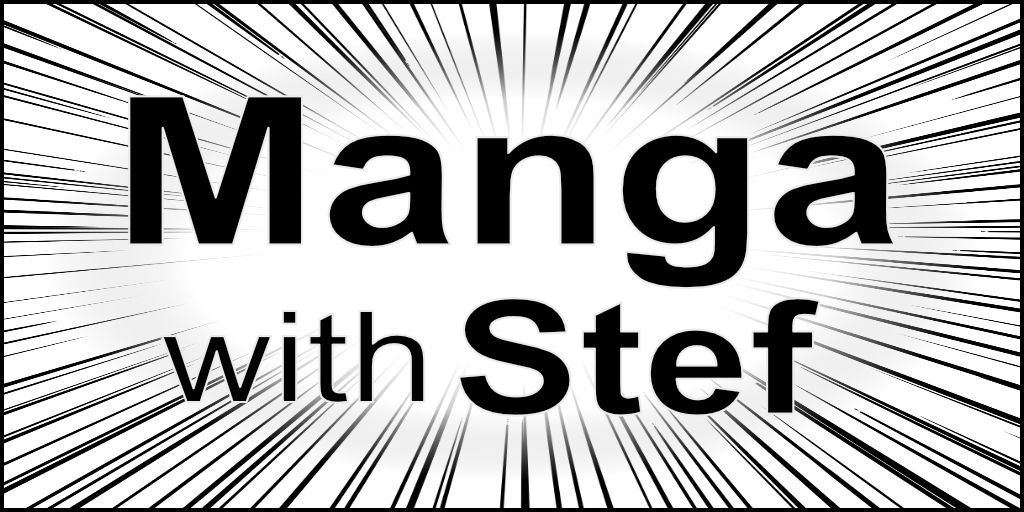
Learn everything about Making a Manga
Welcome to Manga with Stef!
Here you will find everything you need to know about manga making, from start, to finish.
Quick access
Introduction to manga making.
- Writing techniques
- Drawing techniques
Publishing and advertising
Being a mangaka.
- Supplies and equipment
Latest posts
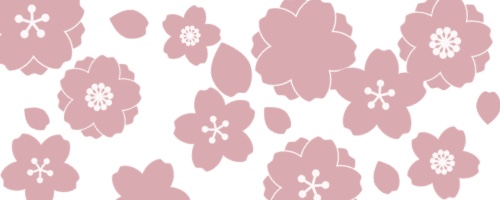
Free Cherry Flower Procreate Brushes
This page presents a set of free cherry flower Procreate brushes. These brushes will allow you to bring the spirit of Spring […]
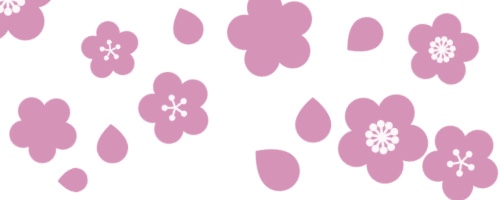
Free Plum Flower Procreate Brushes
In this page you will find a set of free plum flowers Procreate brushes for you to download and enjoy. These brushes […]

Download Free Manga Sound Effects
Here is a set of Japanese Onomatopoeia that you can download for free to make your manga in Procreate or other app.
- Clip Studio Paint 2.0 Pricing and Features Announced October 13, 2022
- Manga Plus Creators August 31, 2022
- New Clip Studio Paint purchase policy August 25, 2022
The following article will give you a quick introduction to the process of making a manga:
Workflow and Equipment for Making a Manga
Making a manga, likewise for a movie, goes through the different stages. It starts with the outlining and scripting the story. Then it continues with the creation of mockups, the sketching, inking and shading / colouring. And it ends the publication of the manga.
How a Manga is Made
You want to make a manga but you don’t know where to start and how to proceed? Don’t worry, in this post […]
Manga making techniques
The following articles deep dive into the technical aspects of making a manga from the perspective of a writer and from the perspective of an artist.
Here you will find articles about the different facets of writing your manga. This is basically. You will find articles on ideation, storytelling techniques…

Finding Manga Story Ideas with ChatGPT
You want to make a manga, but don’t have ideas for a story? You are a writer, don’t don’t know how to […]
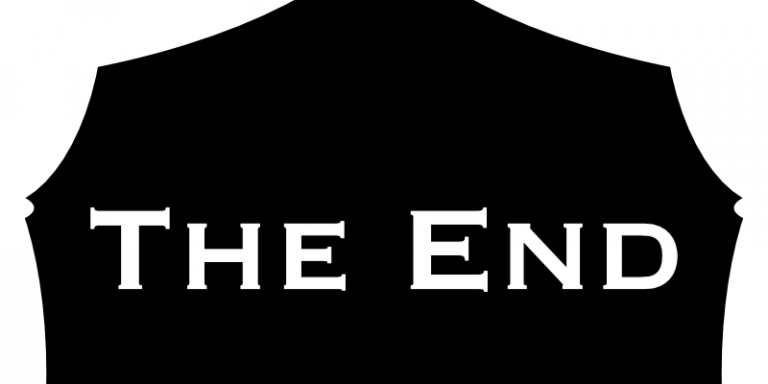
Ending Your Manga Story
All good thing has to come to an end. In this article, I will explain when and why you should put an […]
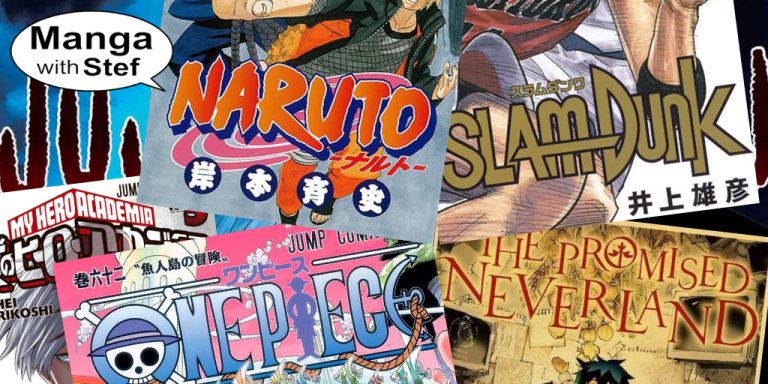
Finding a Name for Your Manga
Finding a name for a manga can at times seem complicated. But if we look at famous manga, their name generally fall […]
View all articles in this section ➠
Here you will find articles about drawing covering a wide variety of subjects. Panels and composition, drawing characters, drawing environments…
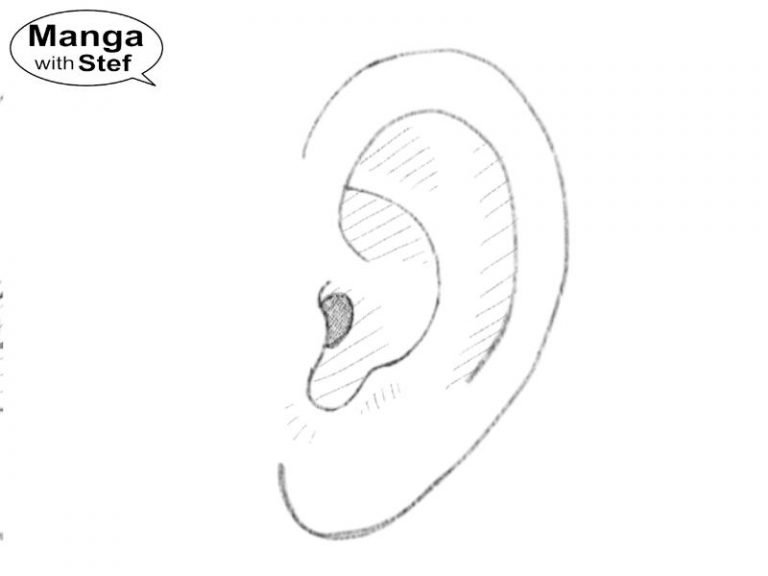
How to Draw Ears for Your Manga Characters
Ears are many times an overlooked feature of the face. This is so much so that many professional manga artists have a […]
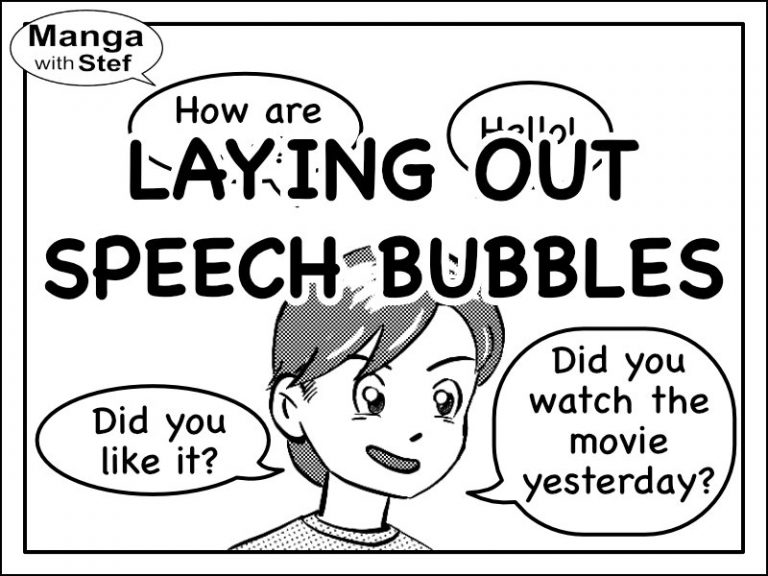
Laying Out Speech Bubbles
Speech bubbles are a key part of a manga. With drawings, they bring a big part of the understanding of your story […]

How to Draw Speech Bubbles
Speech bubbles is the most currently used bubble in manga and comics. It is used to convey the speech of the characters […]
This section gives you some insights on publishing your manga, and advertising it.

Manage Your Manga Realization Planning
Publishing a series, be it for a manga, a web comic…, generally comes with deadlines. When you are new to it, it […]
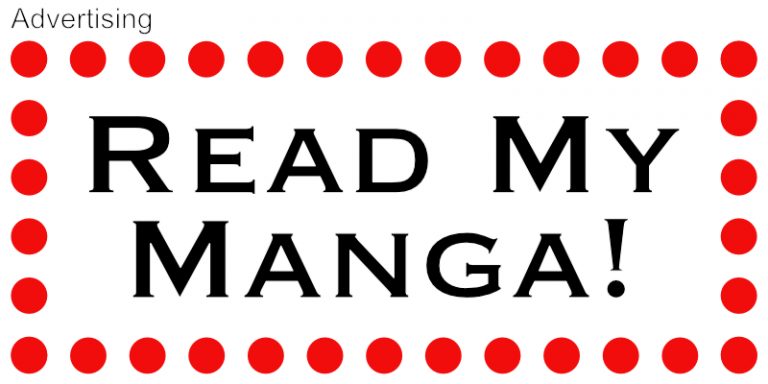
Advertising your manga
There is no success without a good reader base. Therefore if you are not yet someone famous, you will have to “advertise” […]

Publishing Your Manga Digitally
You have quite a few options if you want to publish your manga digitally. You have dedicated websites such as WEBTOON, Tapas […]
This section provides you with various articles around being a mangaka.
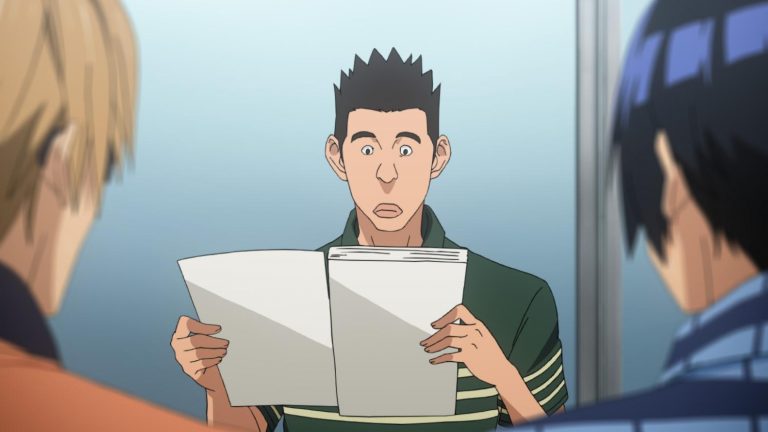
What is the role of an Editor?
An editor is hired by a publishing company to support mangaka in the realisation and publication of their manga. The editor’s role […]
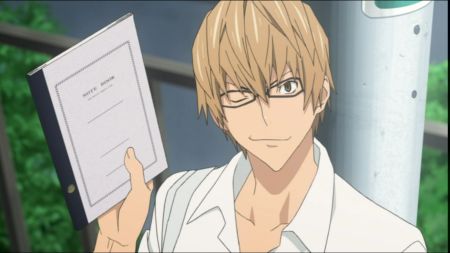
What is the Role of a Writer for a Manga?
The writer is responsible for the story content and structure. As such, his or her role can be key for the success […]
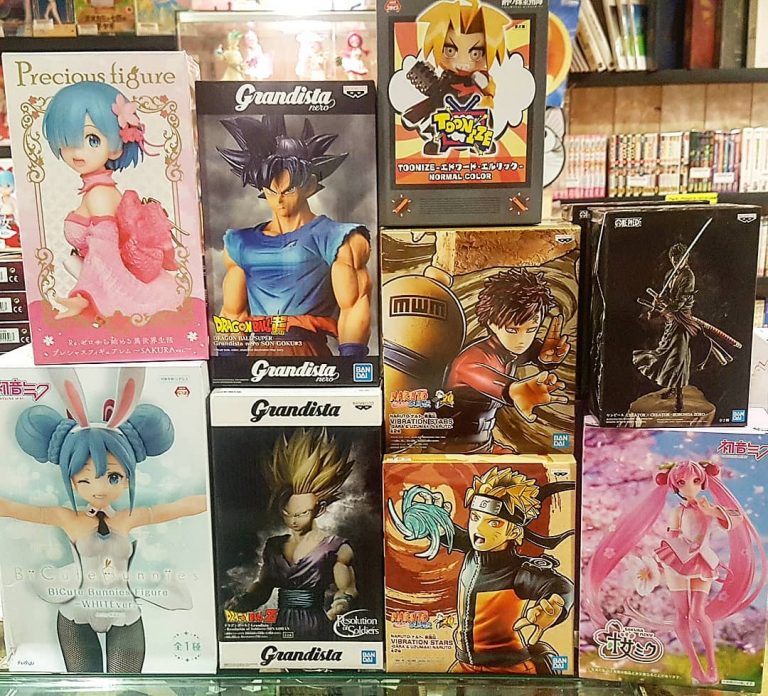
How Do Manga Artists Make Money?
You might be wondering how do manga artists make money, and how much money they earn? Manga artists can have multiple revenue […]
Supplies & Equipment
In this section you will find recommendations and reviews for supplies and equipment.
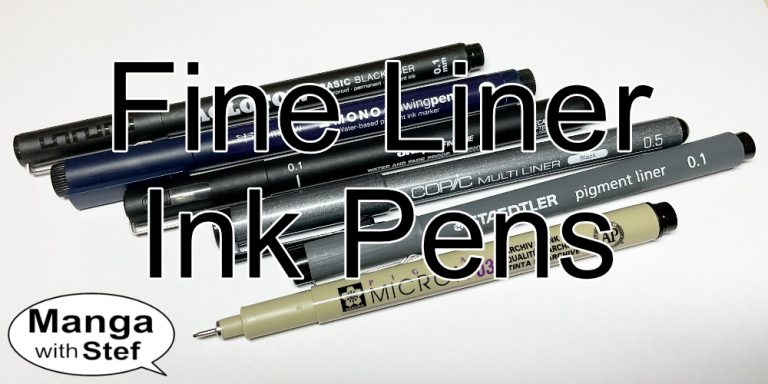
Choosing a fine liner ink pen for your manga
Many brands are selling fine liner ink pens, with many different sizes. Therefore in this guide I will test some of them […]

Which Tablet Computer to Choose to Make a Manga In 2021
Tablet computers have lately become a tool of choice for artists and therefore for making manga. And 2021 finally offers options for […]

What Paper Shall I Use for My Manga?
You are wondering what paper you should use for your manga? In Japan, manga artists are using B4 size sheets of paper […]
This section gives you access to free downloadable material for your manga.

MangaScout – All about the manga industry
How To Become a Mangaka in America?
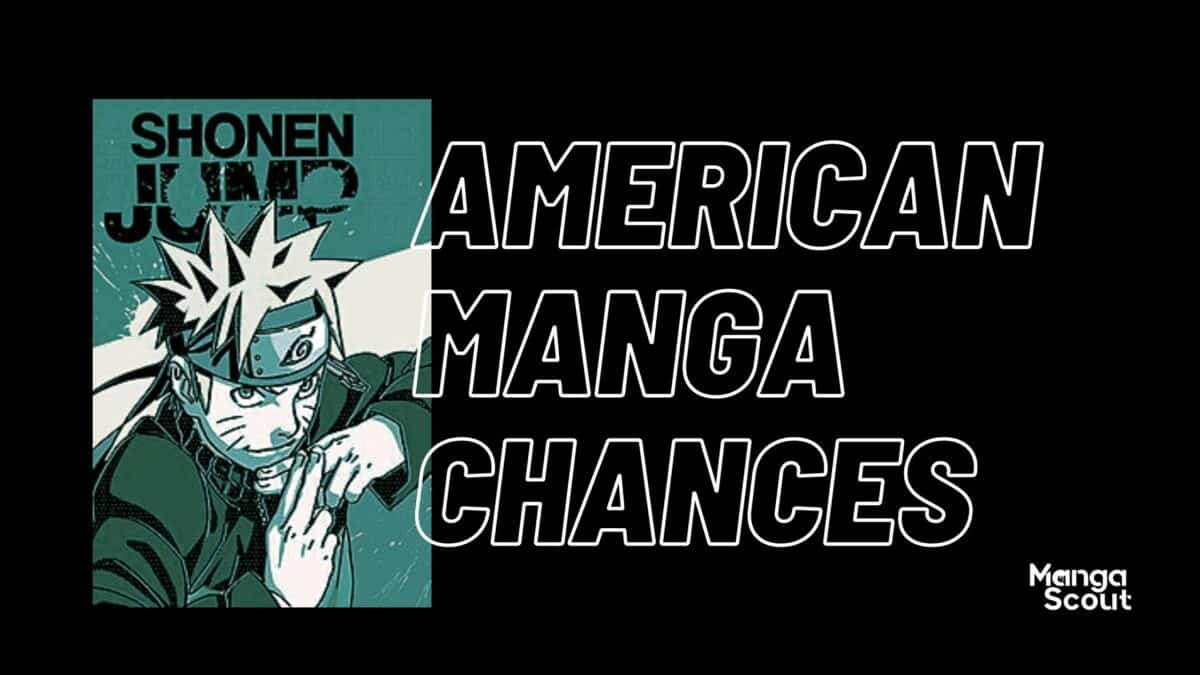
If you’re in America who aspires to be a mangaka, many questions and doubts have likely crossed your mind. After all, there is the notion that you have to live in Japan to find success in this field. Many want to become a mangaka, but few can get their work published — and even fewer are American.
Is it possible to become a mangaka in America? The answer is yes. Some mangakas live in America and produce manga for American and Japanese publishers .
How to become a mangaka in America? By submitting your work to a reputable American manga publisher. And getting your work published through them. Like anything, it’s not an overnight thing. You have to take criticism and rejection to hone your skills to gain acceptance.
Know the avenues and opportunities available to you, hone your skills, and give it a shot. It is possible for as long as you are willing to work.
This post will discuss what you need to know and do to become a manga artist in America.
Let’s get to it.
Table of Contents
- 1 Do you have to live in Japan to Become a Mangaka?
- 2 Skills Required to Become a American Mangaka
- 3 Top American Mangaka Companies to Appy
Do you have to live in Japan to Become a Mangaka?
Do you have to live in Japan to become a Mangaka? No, you don’t have to live in Japan to become a mangaka. Manga is a Japanese style of comic creation. It has a unique shape, drawing elements, and essence from Japanese culture. So, as long as your comic follows the traditional patterns, it’s considered manga.
Manga is something native to Japan. So it is understandable that many would think that production is limited in Japan. The international acclaim garnered by manga paved the way for English manga. We’re not talking about translated Japanese manga. But manga made for an English audience.
The first colloquial name for such works was “Amerimanga,” Yet, this term phased out. Mangas written in English are now called Original English Language manga or OEL.
Skills Required to Become a American Mangaka
You can only maximize the opportunities you provide if you have the skills to back up your intentions. As such, you must spend time developing your drawing and story-telling skills. You also have to know how to maintain creativity under pressure, as being a mangaka can be immensely taxing.
Build the discipline of writing and drawing for a certain amount of time daily to prepare for the lifestyle that comes with being a mangaka. Practice churning out a manga chapter a week.
Taking art courses would be advantageous, but it’s okay to dedicate time each day to practice if you cannot afford formal lessons.
If you are especially keen on immersing yourself in the manga industry, make an effort to learn Japanese. Being fluent in the language would open more doors for you, whether or not you intend to settle down in Japan in the future.
Felipe Smith, a graduate of the Art Institute of Chicago. He studied Japanese and culture. He learned Japanese while working at a karaoke joint in Los Angeles. Then became the first American accepted by a major Japanese publishing company.
Through Tokyopop’s now-defunct Rising Stars of Manga competition. He debuted in the US with his own OEL manga called MBQ. After finishing MBQ, he moved to Tokyo to work in the manga industry. He was able to release his manga, Peepo Choo, under Kodansha’s Morning Magazine 2.

If you live in America, there are several options you can consider:
Top American Mangaka Companies to Appy
Yes, there are American manga distributors. We have 7 of the top ones listed and how to apply to each of them.
1.) Viz Media
Viz Media is the official distributor for Shonen Jump in America. They also started publishing OEL manga for the North American market in 2019. Called “Viz Originals,” and they are accepting new mangas to publish.
Viz Media also does portfolio reviews during their on-site events. There, editors will look at samples of your work and provide one-on-one feedback. This is the exact process for publishing your work in Japan . You can find out more about their review process here .

- Slice of life genres.
Qualifications:
- over 18 years old
- Story snynopsis and plot
- Character descriptions
- Rough sketch of the protagonist
2.) Saturday AM
Saturday AM is a seinen manga anthology. They publish works of creators from all around the world. Founded by Frederick L. Jones, who spent more than a decade as a video game executive. Saturday AM stands on diversity. Its published more than 100 manga issues. Currently has 38 established, recurring titles under its helm.
After gaining wide coverage, the company decided to publish new magazines. Saturday Brunch represents different manga genres like Shoujo, Josei, and LGBT stories. It is currently accepting mangas from new creators in its first release. Meanwhile, Saturday PM contains stories for mature audiences.
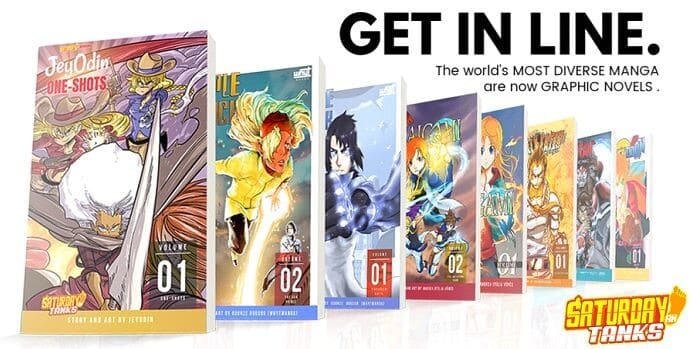
Further, for one month each year, Saturday AM features works from brand new mangakas.
It’s called “Summer of Manga,” where aspiring mangakas get to pitch, edit, and market their work. Alongside the Saturday AM team. To find out more information on how to submit your works.
3.) Shonen Jump Tezuka Manga Contest
Shonen Jump is known for conducting manga contests, and the Tezuka Manga contest is open to receiving mangas written in English. To join, you must have a completed one-shot manga, and you can submit up to two mangas. Drafts and incomplete work will not be considered.
Judges include top mangakas, namely: Akira Toriyama of Dragonball, Eiichiro Oda of One Piece, and Kohei Horishoki of My Hero Academia. This is arguably a contest for the best of the best, and to win an award will surely jumpstart your career as a mangaka.

Winning mangas are translated to Japanese and published in Weekly Shonen Jump Digital Edition. The respective mangakas are invited to the awarding ceremony in Tokyo, and Shueisha covers all expenses.
The winners also get prize money:
⦁ First place: 2 million yen ($18,308.50) ⦁ Second place: 1 million yen ($9,154.66) ⦁ Honorable mention: 500,000 yen ($4,577.33)
Its never been easier to apply.

4.) Noir Caesar

Noir Caesar is a creative indie company established in response to the increasing but underwhelming representation of Black culture in mangas and animes. They are fully Black-owned and managed , and they intend to give a platform to a diverse network of POC (People of color) creators.
They are continuously churning out original content, and they remain open to receive new mangakas.
5.) eigoMANGA
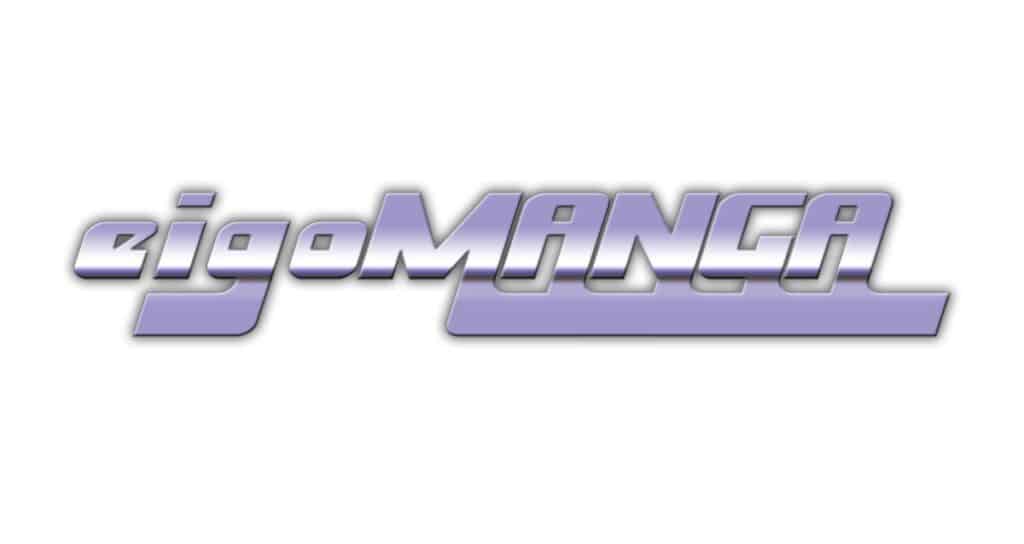
EigoMANGA is an American publishing company that is dedicated to publishing OEL manga.
They currently have two manga anthologies: Rumble Pak, for seinen and shounen, and Sakura Pakk, for shoujo and josei.
They accept submissions from unsigned and aspiring mangakas.
They accept submissions from unsigned and aspiring mangakas. To be considered:
- Your manga has to have at least three chapters penciled and inked
- They do not accept story ideas and concepts on their own
6.) Morning International Comic Competition
Kodansha is the largest Japanese publishing company, and they conduct a bi-annual international manga contest called Morning International Comic Competition.
Check them out here and wait for their competition to start.
7.) Seven Seas Entertainment
Seven Seas Entertainment, an American publishing company, was initially founded to produce OEL manga. It has released over 30 original mangas, including well-known titles such as Amazing Agent Luna and Aoi House.
While they do not accept unsolicited works from unknown artists, they hire mangakas as a part of their staff.
You can see job openings here:
8.) Pop Comics
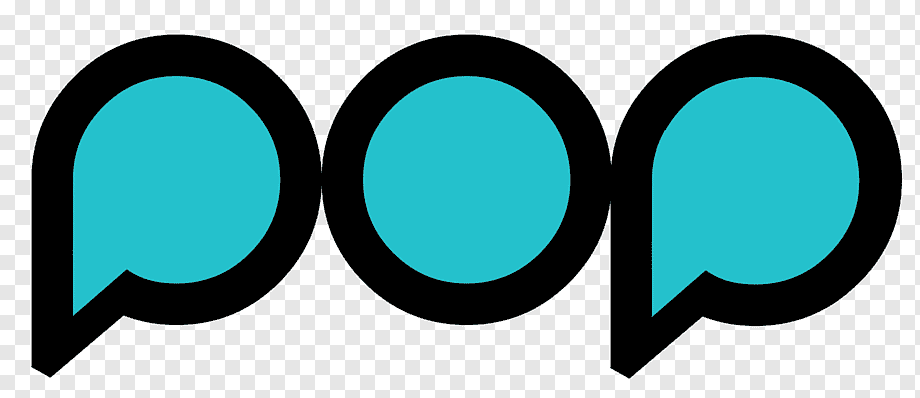
Pop Comics is a creator-owned publishing platform developed by a subsidiary of Tokyopop.
There, you will be able to upload your manga and build a fanbase while retaining copyright .
They work on an AD-based revenue stream where you keep 70% of the ad revenue that comes into the platform. They promote popular works that stand out.
You can begin by creating your own account here:
Now, it’s time to hear from you:
Did I miss anything?
What are your plans for becoming a mangaka?
Do you know of any American mangakas or mangas?
Whatever your answer is, let’s hear it in the comments below.
Leave a Reply Cancel reply
Your email address will not be published. Required fields are marked *
Save my name, email, and website in this browser for the next time I comment.
- Creating Your Own Manga: A Step-by-Step Guide
Step 1: Develop Your Story
Step 2: create your characters, step 3: design your artwork, step 4: write your script, step 5: publish your manga.
Consider what platform you want to use for publishing and what format you want to use for distributing your Manga . You can also consider selling physical copies of your Manga , or even creating an online store for digital downloads. Creating your own Manga can be a challenging but rewarding experience. With the right guidance and tools, you can create a unique and compelling story that will draw readers in.
Take the time to develop your story, create your characters, design your artwork, write your script, and publish your Manga . With dedication and hard work, you can create a Manga that is truly yours.
Leave Reply
All fileds with * are required
This message is not a spam intent
- Everything You Need to Know About Manga News and Updates Online
- The Difference Between Manga and Manhua
- Exploring Manga-Related Forums Online
- The Most Popular Manga Series of All Time
- The Difference Between Manga and Anime
- Tips for Writing a Great Manga Story
- Understanding the Difference Between Shonen and Shojo Manga
- Tips for Collecting Manga Merchandise
- Exploring the World of Manga Podcasts
- Tips for Finding Good Deals on Manga Books
- The Fascinating History of Manga
- Tips for Finding Rare and Hard-to-Find Manga Books
Tips for Finding Good Deals on Manga Merchandise
- Tips for Selling Used Manga Books Online or in Stores
- Exploring the Different Genres of Manga
- The Most Famous Manga Authors of All Time
- The Difference Between Webtoons and Manga
- The Difference Between Japanese and American Manga
- The Difference Between Doujinshi and Manga
- Everything You Need to Know About Manga Conventions
- Exploring Manga Fan Clubs in Your Area
- Everything You Need to Know About Upcoming Manga Releases
- Exploring the World of Manga Blogs Online
- Everything You Need to Know About Manga
- Tips for Buying Used Manga Books Online and In Stores
- Everything You Need to Know About Manga-Related Merchandise in Your Area
- Tips for Finding Good Deals on Digital Manga
- The Difference Between Manga and Manhwa
- The Most Influential Manga Series of All Time
How to Find Manga-Related Events in Your Area
- The Best Manga Websites to Visit Online
- Exploring the Most Popular Manga Magazines in Japan
- Finding the Right Manga Artist for Your Collaboration
- How to Find New Manga to Read
- How to Find Manga-Related Social Media Accounts Online
Top Manga Apps of 2023: What to Expect

Which cookies do you want to accept?
- The Inventory
- Tips & Guides
- Entertainment

How To Become a Manga Editor
Do you dream of making manga? Make those dreams reality. Because there’s more to making manga than drawing and writing. Here’s how people in Japan help shape the characters and stories you know and love by getting jobs as manga editors.
Suggested Reading
Recently, Mami at website Tofugu visited Shueisha, the publisher of Weekly Shonen Jump and countless famous manga, and interviewed an editor (note: the particular editor asked to remain anonymous).
The heck does a manga editor do? They work with the artist and writer (who can sometimes be the same person) in shaping and fine-tuning the manga as they oversee the publication process.
Related Content
Tofugu asked how one becomes a manga editor in Japan. Here is the Shueisha editor’s reply:
There are three big steps involved in getting a desk inside a manga company. First, you fill out an “entry sheet” and send it to us. So many people want to join Shueisha and this is our first method of screening. If your entry sheet is accepted, you can move on to the next step, which is an exam. The exam is pretty long (about four hours) and it contains current topics, common knowledge, Japanese literature, English, Kanji, and an essay. After passing this exam, you will have to make your way through a couple interviews. Once past this entire process, only a select few will be asked to join our company. Even if you make it that far, management decides which department you’ll work for, so you’ll need a bit of luck to become a manga editor. Anyway, that’s the process, but you shouldn’t think of how to get into the company you want to work for. Instead, you should think of what you would want to work on if you were actually employed there. That helps you relax, and helps you figure out what you really want to do and why you want to become a manga editor.
As for further advice, this manga editor suggested reading, well, “a lot of manga.” For editors, reading is a key part of the gig. But it’s important not to passively soak up the words and stories. “You should read it as if you were the creator and think about how you would make the story better,” the editor added. “You should also know of a lot of manga writers and artists and think about if one of them would make a better fit for the specific manga you’re reading.”
The best advice the editor gave, however, might be this: “You should also try to reflect on the reasons why a manga inspired or moved you a great deal.” The editor said that you should in particular recall the manga that you loved growing up. “The most useful skill when working in the manga industry is your sensitivity to recognizing why particular thoughts and emotions were cultivated from those books.”
You can read the full interview and check out many more pictures over on Tofugu .
Top image: Tofugu
To contact the author of this post, write to bashcraftATkotaku.com or find him on Twitter @Brian_Ashcraft .
Kotaku East is your slice of Asian internet culture, bringing you the latest talking points from Japan, Korea, China and beyond. Tune in every morning from 4am to 8am.
Get the Reddit app
PLEASE READ RULES BEFORE POSTING. Welcome to the comic writing workshop! If you encounter a specific problem in your comic writing, post it here for advice and solutions. NO CRITIQUE REQUESTS.
Any tips on how to get into comics as a writer?
I love comic books, graphic novels, manga and I've wanted to create them since I was a kid sketching my own terrible comics, but as I've grown older I've become much more of a writer and still want to do it yet it feels almost impossible to break in or even just do a small indie project without any sort of drawing experience.
The thought of approaching artists always felt odd because they, rightly so in a lot of cases, often feel like people want them to do the work for them and paying someone commission to bring a book to life feels like less of a collaboration and more of a one-way transaction.
A lot of the mainstream publishers are focused on finding people who can write and draw, or in publishing books with a creative team in place and a proof on concept.
So, how do only writers go about creating comic books? Is there any advice you can offer?
- Final Fantasy XIV
- Helldivers 2
- Stardew Valley
- Terms of Service
- Privacy Policy

14 best manga for beginners to help ease you into the medium
When I first got into manga, it felt almost taboo or like a style of books I shouldn’t be into because most of my friends only dipped their toes into graphic novels. But that’s definitely not the case, and there are some great picks out there for true beginners.
As I was growing up, I was almost ashamed to read graphic novels in public because I thought people would look down on me for the images and contents. I didn’t think The Walking Dead could stand up to Stephen King’s The Dark Tower series , but it absolutely can, and manga does so even better. But it’s difficult to know where to start with manga, which is why I’ve put together this list of the best books you can pick up as a beginner that’ll help you ease yourself into the genre before you take off the training wheels and start exploring on your own.
Manga that will give you an intro to the medium
Below are the best manga you can read as a beginner. They’re not too overwhelming in their content and don’t require much prior knowledge of the stories told on their pages. In fact, most of the franchises you’ll recognize below started life as manga.
14. Fruits Basket

Fruits Basket is a great manga series for beginners that’s a bit of a classic having been originally published in 1998. Protagonist Tohru Honda moves out of her family home after tragedy strikes, but she doesn’t have anywhere to go. So she pitches up a tent and settles in for what she thinks will be a quieter life for the time being. However, she’s soon discovered by the lands owners, the Sohma clan, and it becomes apparent that they’re not all that they seem. You see, when touched by someone of the opposite sex, they transform into animals from the Chinese Zodiac. It’s an odd but ultimately compelling introduction to shojo stories.
13. Blue Box

Blue Box is a manga for those who want something a bit more modern. You follow Taiki Inomata, a student who adores badminton and wants desperately to become good enough to play on a national level. He falls for Chinatsu Kano, an upperclassman when he sees her practicing with every ounce of effort she has for the girls’ basketball team. Events transpire that see the pair come closer together, and somehow sports isn’t the only thing they can think about anymore. Stories like this that feel grounded and realistic always make my heart sing when I’m reading them, and I think that makes it a perfect manga to kick your journey off with.
12. Monster

Monster is a gritty adult manga with a twisting murder mystery at its heart. After opting to save a young man’s life over the major’s Dr. Kenzo Tenma loses his social standing in the hospital where he works. Years later, Tenma saves another man who mutters about a monster, but the man escapes the hospital. Tenma pursues him and sees his patient shot to death. Tenma is immediately suspected by the police, and uncovers the horrific past of the young man he saved while seeking to prove his innocence. Note: this does deal with some serious subject matter, so please research the content warnings for it if you’re at all worried about it.
11. Dungeon Meshi / Delicious in Dungeon

Dungeon Meshi , which you might also know as Delicious in Dungeon , this manga follows a party of adventurers after a colossal red dragon attacks them, consuming the most powerful mage among them, who happens to be warrior Laios’ sister.
The party were, mercifully, saved by their mage companion right before she was eaten, but vows to return to face the red dragon and kill it before she is digested. However, they’re low on funds and can’t afford all the rations needed to traverse the dungeon, so they’re going to cook whatever monsters they find while delving back through it.
This series is part-dungeon adventure and part-cooking show. It’s an unexpectedly great combination because you feel like you’re learning while you see this party kill and then cook up fantastical creatures that get featured in games, TV shows, movies, and books.
10. Look Back

Look Back is a one-shot manga about an elementary school student who, after having her manga published in the school paper and praised for her work, finds herself competing with another student in the school who begins publishing her own manga. Over the years, the two grow close, working on several on-shots together, but life choices see them drift apart. It’s an emotional story that will definitely tug on your heartstrings and makes for a fantastic entry point into the genre.
9. One Piece

One Piece is another gateway manga I used to get into this genre. It’s a franchise many manga fans discuss because it’s got not only an incredible long-running anime series but also a Netflix show. There are dozens of volumes of this series for you to read. As with all manga, starting at the beginning to see if you like it is the best place.
The One Piece manga follows Monkey D. Luffy on his quest to find the ultimate treasure, known as One Piece, and become the ultimate pirate by claiming it. Luffy is pretty special, having been rubberized after eating a Devil Fruit. The series is packed with exciting pirate battles and has some of the most memorable characters you could hope to read. It’s the pirate angle that gets me, though, and I think everyone finds a series easier to digest if it’s built on such a familiar concept.
8. Attack on Titan

Another manga better known for its anime counterpart , Attack on Titan is a brutal series that blends sci-fi and fantasy within a steampunk world that I find very intriguing. Every page makes you want to dive into the next because you never know what’s coming.
The books follow Eren Yeager, a young soldier who vows to kill the colossal Titans that plague humanity and force them to live behind giant walls for protection. The characters in this series are great, and the overarching story of where the Titans originate from is fascinating. It kept me reading and working through Yeager’s journey without it ever feeling like a chore. Very easy reads and a universe you’ll be glad you checked out.
7. Death Note

When you’re scanning through the Death Note covers in your local bookstore, it looks pretty daunting. However, the story itself isn’t difficult to understand or get into, but it is a thrilling read and an extremely unique idea. It’s a great series demonstrating some of the brilliant tales being told in manga that you’d miss out on if you discounted the genre.
In Death Note , you’ll follow protagonist Light Yagami. This high school student discovers a notebook called Death Note and quickly realizes that it grants the owner the power to kill anyone whose name is written on its pages. This is because it was once owned by the Shinigami Ryuk, a spirit that beckons humans towards death. That kind of power coming from a book is one thing, but the way the series expands to cover even larger ones, such as wiping out all crime in a region used in said book, is what sets it apart from stories that might not make the most of the power they explore.
6. Sand Land

Sand Land is an easy series to get into from Akira Toriyama , one of the best-known creators in the genre. It’s set in a far future on Earth when war has decimated the planet, and a greedy king controls and distributes water. The series follows Sheriff Rao, a Thief, and the king of demons, Beelzebub, who happens to be the king’s son, in search of a long-lost lake and liquid freedom.
In this travel adventure, the trio knocks heads with some epic foes, including dragons and bandits. But the deadliest foe they’ll face is the king’s army itself, forcing them into fights where the odds seem pretty stacked against them.

The story of REAL revolves around wheelchair basketball and follows three teenagers in various stages of life around high school. The most intriguing arc is for Takahashi Hisanobu, who was the school’s basketball team hotshot until an accident left him wheelchair-bound as a paraplegic.
While it might sound like REAL tackles with some heavy subjects, it’s actually very relatable. The manga’s three characters are all marginalized by society and sometimes each other, but they share a common goal and simply want to be accepted for who they are and what they love doing. I like it because I find any media difficult to digest if there’s no way I can relate to it, but we’ve all felt marginalized in some way before, and that’s why I think it’s easy to connect with REAL as a beginner manga enthusiast.
4. My Hero Academia

My Hero Academia is another manga series that always comes up in conversations about the subject, but it can be hard to gauge if it’s right for you as a beginner. However, I can tell you right now that this is absolutely a great place to start because it puts you in the shoes of a true starter from the very first page.
This series follows a young boy called Izuku Midoriya. He was born without superpowers, known as Quirks, but dreams of becoming a superhero. the world’s greatest hero sees potential in him and enrolls him in a school for those with Quirks after bestowing his own on the boy. You follow someone learning about their powers in a world where superpowers are the bog standard basic, and your confusion and ignorance are accepted because the protagonist you enter the world as is just the same.

Uzumaki is perhaps Junju Ito’s best known work and the perfect place to get into his incredibly brand of horror in manga. The story is centered around Kurouzu-cho, a small town constantly shrouded by fog on Japan’s coastline. It’s not haunted by ghosts of the past, though, it’s haunted by Uzumaki, a sharp, the mysterious spiral, and a secret kept by our world. It’s incredibly dark and has some memorable scenes that are going to stick with you long after you’re done reading.
2. One-Punch Man

One Punch Man is a character who has transcended manga, making it into all sorts of other media, including a workout from The Bioneer . It tells the story of Saitama, a man who has become a hero because he’s trained himself to defeat any opponent and do a lot of other things with a single punch. That’s not an exaggeration, and it’s just as cool as it sounds.
The manga tells a bonkers tale of this character, someone who basically fights villains and monsters in his spare time if he feels like it, and how he ends up saving the world with his sheer strength. As you read, you’ll also appreciate who Saitama is and why people might want to train themselves to reach a personal goal of enjoyment over recognition from others.
1. Polar Bear Café

Polar Bear Cafe is a really different manga, but one I think you should try if you’re looking for a complete beginner’s list. It’s a beautifully simple concept of animals mingling with humans in a café run by a polar bear, the best animal in the world.
If you’re getting into manga, you should read Polar Bear Café because it’s a great example of the playful side of the genre. Not all manga is death, fighting, and martial arts. some of it’s just telling stories through a new lens.
With this list of manga to go out and read through, you should have the basics every beginner needs. Once you’ve worked your way through them, even if you put some of them down after Volume 1, you should have the confidence to head out to your local bookstore, browse through the shelves, and decide which one you’re going to jump into next.

- Subscribe Digital Print

- Tokyo governor race
- LDP presidential election
- Weakening yen
- Latest News
- Deep Dive Podcast
Today's print edition
Home Delivery
- Crime & Legal
- Science & Health
- More sports
- CLIMATE CHANGE
- SUSTAINABILITY
- EARTH SCIENCE
- Food & Drink
- Style & Design
- TV & Streaming
- Entertainment news
How to make it as an English-language author in Japan

Travelers, adventurers, academics and dreamers — attend any Japan Writers Conference and you’ll know that the expatriate community is alive with writers of every stripe, but breaking into the industry can be a tricky business.
I sat down with three authors with books coming out in 2024 — Ellen McGinty , Ambika Nagino and Kristin Osani — to discuss the ups and downs of the publishing industry and the long (and very different) roads each of them took to seeing their books in print.
In a time of both misinformation and too much information, quality journalism is more crucial than ever. By subscribing, you can help us get the story right.
- USA & Canada
- Australia & New-Zealand
- Southeast Asia
- anywhere on the site
- in the encyclopedia
- in the forums
- remind me tomorrow
- remind me next week
- never remind me
News Writer Hanai Warugi, Manga Author Shōichi Taguchi Launch New Manga
The official X (formerly Twitter ) account of Kadokawa 's Monthly Comic Alive magazine announced on June 20 that writer Hanai Warugi and manga author Shōichi Taguchi will launch a new manga titled Bodokan! ~Onna, Shūjin Dōshi, Kangoku de Nanimo Okoranai Hazu ga naku~ (Bodokan! ~Women, Prisoners, It's Impossible that Nothing Will Happen Between Them in Prison~), on Kadokawa 's KadoComi manga service on Thursday.

Taguchi also announced the new manga on his X/ Twitter account, and described the series as a "crazy yuri comedy manga." The story is about playing board games in prison, with forced yuri transformation as punishment for the loser. KadoComi first published the story as a one-shot manga in 2022, under the title "Bodokan!."
Taguchi launched the I Sold My Life for Ten Thousand Yen Per Year ( Jumyō wo Kaitotte Moratta. Ichinen ni Tsuki, Ichiman'en de. ) manga in August 2016 on the Shonen Jump+ app and website, and the manga series ended in October 2017. The manga is an adaptation of Sugaru Miaki 's Three Days of Happiness ( Mikkakan no Kōfuku ) novel, which Yen Press is releasing in English.
Taguchi launched the Futari Escape manga in Ichijinsha 's Comic Yuri Hime magazine in July 2020, and the series ended in December 2022. Ichijinsha published the manga's fourth and final compiled book volume in February 2023. Seven Seas licensed the manga and released the fourth volume on December 26.
Taguchi published a seven-page serialization notice of a new manga titled The Good Witch Living in Gifu ( Gifu no Yoki Majo ) on Mag Garden 's Mag Comi website in December 2022. The notice did not specify a year when the manga will start serialization.
Source: Monthly Comic Alive magazine's X/ Twitter account
News homepage / archives
DEMON SLAYER -KIMETSU NO YAIBA- The Stage Part 1 Review
Clamp's magic knight rayearth manga gets new anime project, the summer 2024 anime preview guide, anime expo 2024 brings tamashii nations to los angeles, urusei yatsura 2024 anime series episodes 37-46 review, at the kadokawa booth at ax2024, there will be more than 120 products from 9 series available, mushoku tensei: jobless reincarnation anime gets 3rd season, the new gate anime series review, tadaima, okaeri anime series review, kaiju no. 8 anime gets sequel, koki uchiyama joins cast, advance merch sale at the kadokawa booth, studio pierrot announces production on new magical girl tv anime.
- Convention reports
- Press Releases
- Your Score for Recent Simulcasts
- Upcoming Anime List
- Upcoming DVD & Blu-ray
- Weekly Rankings
- Summer 2024 Preview Guide
- Daily Streaming Reviews
- Encyclopedia
- Subscribe »
- ANN:Connect
- Staff openings
- Privacy policy
- Copyright policy
- Advertise with ANN
- Report a Problem
- Bugs & Technical Questions Forum

July 9, 2024: How to draw a manga page from scratch in Clip Studio Paint, with Whyt Manga
We’re so excited to kick off wacom creativity camp 2024 with this free online manga workshop from whyt manga on july 9, 2024, at 4:30pm pdt.
Wacom Creativity Camp is a series of free, live, online workshops from brilliant artists, creators, and educators throughout the month of July 2024 ! If you want to learn all about character design, illustration, comics, manga, art education, and more, check out the Creativity Camp homepage for all the details and resources. And make sure to sign up for Creativity Camp to get reminders about and to register for all of the workshops!
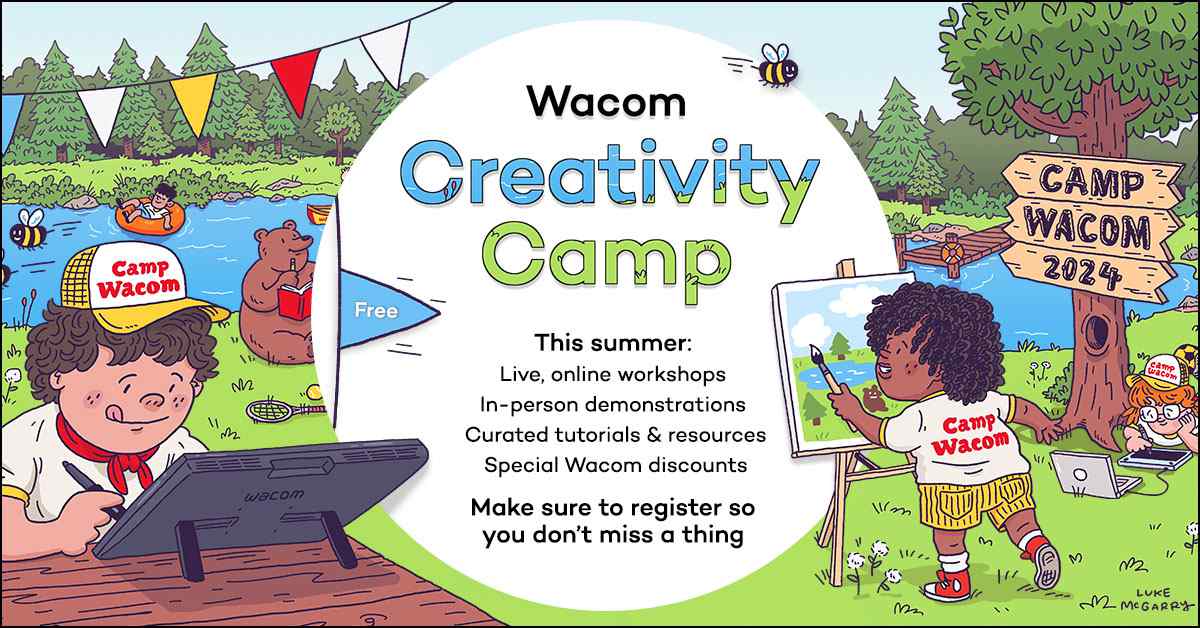
Odunze Oguguo , also known as Whyt Manga online, is a YouTuber with 500,000 subscribers , a manga/comic creator, co-founder of Myfutprint Entertainment, LLC, and creator of Apple Black , a manga traditionally published worldwide on Saturday AM . Oguguo is also an art director for Sandstorm Comics in the United Arab Emirates. Check Whyt Manga out on Instagram , YouTube , Tik Tok , X (Twitter) , or Twitch — or support his work on Patreon !
Oguguo will be presenting How to Draw a Manga Page from Scratch in in Clip Studio Paint as part of Creativity Camp on July 9th, 2024, at 4:30pm PDT, live on Zoom! Click here for more info about the workshop and how to register.

In advance of his workshop, we spoke to Oguguo about his background, interests, inspirations, what to look forward to during his workshop, and what he’s got going on in the future.
How did you first get into manga and art in general? Were you a creative kid?
I’ve always been drawn to art and storytelling from a young age; it’s how I made friends, honestly. Growing up in Nigeria, due to power outages, I would get bored, and it pushed my creativity as a kid, constantly drawing and coming up with stories allowed me to make lots of friends without being super social. I was introduced to manga by new friends through shows like Dragon Ball Z, Pokemon, Bleach, and Naruto, which inspired me to create my own characters and worlds. The dynamic art style and captivating stories of manga really resonated with me, and I knew I wanted to be a part of that world. Thus, Apple Black was born.
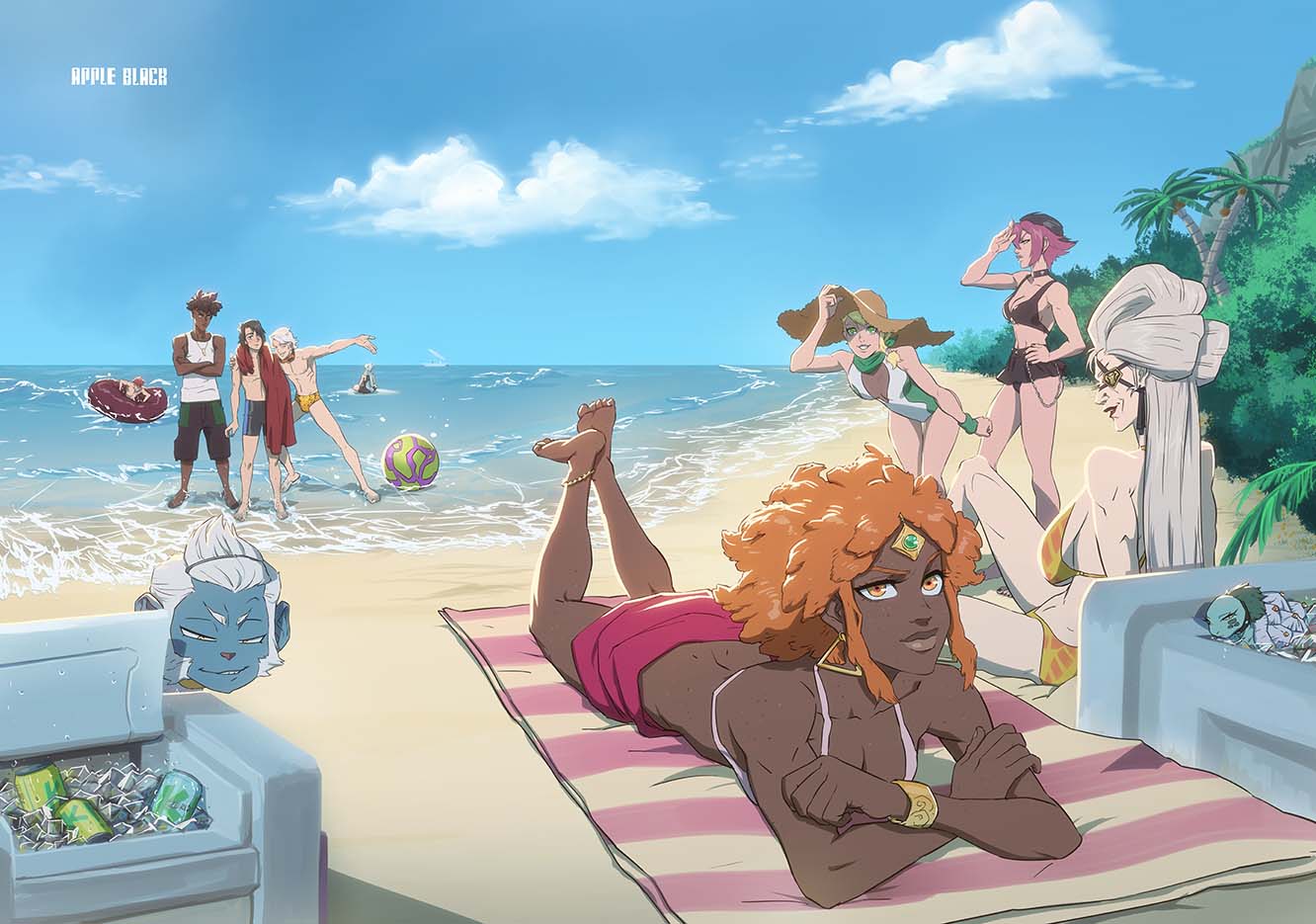
Did you go to art school? How do you feel about the wealth of art instruction resources available online these days? Do you think going to art school is a necessity, or can young or beginning creatives teach themselves what they need to know?
I got a bachelor’s in Fine arts and a Masters in Visual Communication Design at the University of Texas at Arlington, where I learned a lot and met some top-tier teachers. However, about 85% of everything I know about making manga, specifically, is self-taught using online resources with some trial and error. And then, boom, I’m somehow traditionally published worldwide!
Art school helped provide me with a solid foundation, amongst other skills. However, with the abundance of resources available online today, I believe that self-taught artists can achieve just as much. Platforms like YouTube, online courses, and communities offer incredible opportunities for learning and growth. While art school can be beneficial, it’s not a necessity. Dedication, practice, and utilizing available resources can take you far.
You’re a published manga creator. How did you decide that you wanted to pursue manga as a career? What do you love about it?
The decision to pursue manga as a career came from my passion for storytelling and my love for the art form. I initially went to school to study computer science. Still, I later switched majors and graduated with an art degree, but also with a minor in Computer science because I had already taken some classes, and I didn’t always hate coding.
Still, I knew telling stories was what I wanted to do. I enjoy creating characters and worlds that people can connect with. What I love most about manga is its ability to blend visual art with narrative to engage readers deeply. I’m a huge plot twist nerd from all kinds of media beyond just manga, and I incorporate that into my writing. The possibility of inspiring others through my work is incredibly rewarding.
It seems rare for manga creators outside of Japan to be successful or to make their way into the industry. Is this true? How did you break into the manga industry? What tips or advice to you have for students or beginners who might want to follow a similar path?
It is challenging, but not impossible, for non-Japanese creators to break into the manga industry. I broke into the industry through persistence, understanding social media, improving my craft, documenting my journey, teaching others, being lucky, and helping to found Saturday AM, which supports diverse creators.
My advice for aspiring manga artists is to keep honing your skills, stay true to your unique voice, and seek out opportunities to share your work. Networking and building a community around your work are also crucial. Be consistent and just do it, like Nike. Be ready for when the luck comes; as long as you’re consistent and honest with yourself and your growth, it will come.
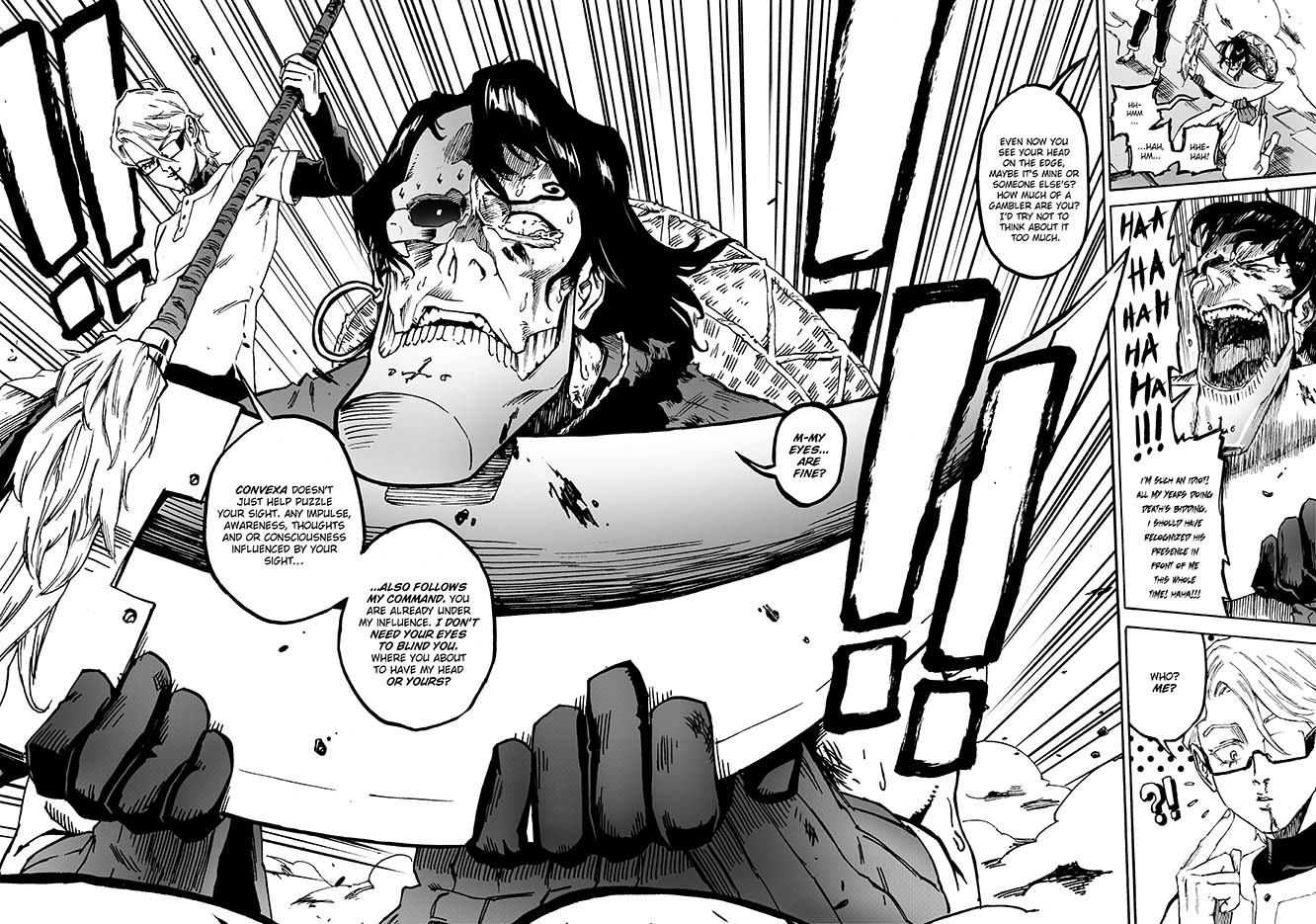
How did you develop your own personal art style? What are some of your biggest influences and/or inspirations?
Developing my personal art style was a journey of experimentation and learning; starting out, many people said my art style resembled Tite Kubo’s Bleach, and that was because that was the first manga I religiously read. Over time, while consuming media beyond manga, my art style developed into its own unique voice. \
I drew inspiration from various sources, including other traditional manga artists besides Kubo, like Yusuke Murata and Masashi Kishimoto, as well as a few Western comics, filmmakers, and my Nigerian heritage. Combining these influences helped me create a unique style that reflects my background and interests. Studying different styles, practicing consistently, and letting your own experiences shape your art is essential.
How do you stay motivated when you’re feeling stressed or uninspired?
Staying motivated can be challenging, but taking breaks, watching other shows, playing soccer and chess, revisiting favorite works, and engaging with the community helps. Sometimes, stepping away from a project and coming back with fresh eyes can reignite inspiration. It’s also helpful to set small, achievable goals and celebrate progress, no matter how minor it seems. Being organized and cleaning your space also helps clear your mind. Family, friends, and supporters also help keep me motivated; they support me, and I don’t want to disappoint them. Lastly, loving what you do and truly believing that it is a “calling” for you to do it will also take you far.
What Wacom device(s) do you use? Why do you choose to use Wacom products?
I use a Wacom 22-inch Cintiq for my work. Wacom products are reliable and highly precise, essential for detailed manga artwork. The pressure sensitivity and responsiveness of Wacom tablets make them ideal for digital art, allowing me to achieve the look and feel I want in my illustrations. It’s easily the best tablet I’ve used to date, and I’m not just saying that.
What will your workshop at Creativity Camp cover? Who should attend and what can they hope to learn from your workshop?
My workshop at Creativity Camp is… How to Draw a Manga Page from Scratch in Clip Studio Paint! This manga workshop will provide an easy step-by-step guide for creating a professional manga page using our Wacom tablet and Celsys Clip Studio Paint. From idea to execution, all necessary steps will be covered, along with additional tips from my experience as a published manga creator. It’s designed for beginners and intermediate artists interested in manga.
Attendees can expect to learn practical manga-making tips, receive feedback on their thoughts, and gain insights into the industry. The goal is to inspire and equip participants with the skills to bring their stories to life.
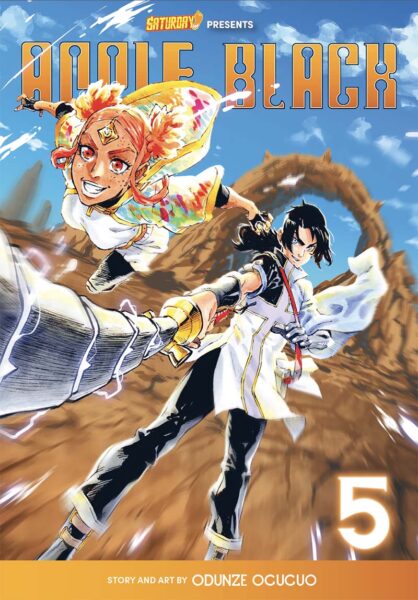
Where can people go to learn more about you, your work, or to follow your journey? Do you have any projects coming up that you’d like to share or promote?
Y’all can follow me on Youtube , Instagram , TikTok , and Twitter , where I share all my art and updates. My manga series, Apple Black, is available through Saturday AM. Volumes 1-4, which encompasses season 1 of the Shonen series, are available now; Volume 5 drops later this year, and an Apple Black prequel Light Novel just released – Apple Black Origins: The Spectrum and the Spectre ! Apple Black merch and shirts on Atsuko , Hot Topic , and more are also available. I’m also working on new major projects and collaborations that I’ll announce very soon, so stay tuned for more exciting updates!
Make sure to register for Whyt Manga’s free, live online workshop on July 9th, 2024 at 4:30pm PDT here !
Learn more about creativity camp, access the curated resources, sign up for updates and reminders, and register for individual workshops by clicking here , related posts:.
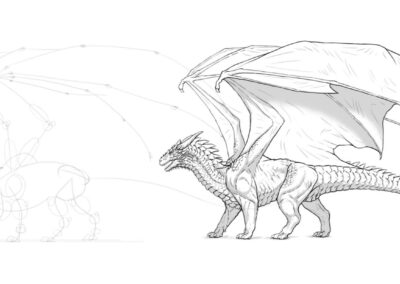
How to draw a dragon, with Monika Zagrobelna

Get ready for Wacom Creativity Camp 2024!

“The Fish Market:” Eunbi Kang’s digital illustration process on Wacom Cintiq 16

How to design a logo in Adobe Illustrator, with Joli Noelle David
Connect with wacom on social media.
Celebrating all love. All together. All the time. ❤️🧡💛💚💙💜 #MadeWithWacom by @i.amgaby_ using Wacom One 12 #LoveIsLove #PrideDay

Artists when no one is watching. 🙈🥸 Thank you @lplucas, for making us all feel seen. #artistsofinstagram #artistlife
We really enjoyed interviewing manga artist @laovaan 🚀 Laovaan shared his insights about the differences of working with traditional and digital art, and the role of Wacom tools on his creation process! #ArtistInterview #Manga #DigitalArt #CreativeProfessionals
Otaku friends, see you this week at @dokomi_expo 2024! 🤩 Swing by the Wacom booth for 3 days packed with amazing activities: 🖌️ Show off your talents in Art Battles! 🌟 Experience our latest products with on-site click & collect! 🤝🏻 Get the chance to meet Connected Ink Village artist Ktym from Japan (@yuki_ktym_) 🔥 Don’t miss the special presentation by Wacom’s CEO Nobu Ide and Celsys’ CEO Kei Narushima on Saturday, 29th from 14:15-15:30. (@clipstudioofficial) 👀 Many more surprises to be revealed during the event! We can’t wait to meet you 👇🏻 📍Trade Fair Düsseldorf, Germany 📅 June 28 - 30, 2024 ✍🏻 Wacom Booth > Halle 3, 3G67 See you this friday!
🚀 Appel ouvert aux artistes qui veulent nous joindre Webtoon Academy! @ellipseanimation, @ono.officiel et @kenaz_comics lancent la Webtoon Academy Angoulême, une formation gratuite à la création de webtoons, menée avec le soutien de l’ @emcangouleme , Wacom et Celsys. (@clipstudioofficial) La Webtoon Academy Angoulême est une formation gratuite qui vise à former et accompagner 12 talents francophones de tous horizons (webtoon, bande dessinée, animation...) et de tous les âges dans la création de séries webtoons. A partir de septembre 2024, au fil de 13 semaines de cours par des experts coréens en présentiel à Angoulême et de cours en ligne, les artistes maîtriseront toutes les bases pour raconter leurs histoires en webtoon. Des projets lauréats pourront être sélectionnés par un jury pour finaliser leur série webtoon en vue d’une diffusion en France sur ONO et à l’international via le réseau de plateformes partenaires. 📍Les candidats peuvent soumettre leur dossier sur le site! #WebtoonAcademy #Webtoon
@elyelyilustracion nos cuenta cuál es el proceso para hacer sus ilustraciones ✏️❤️ Y tú, cuéntanos… ¿cómo es tu proceso creativo? 👇 #CreativeProcess #Illustration #WomenInIllustration
"I actually prefer to draw on small, screenless tablets..." @dewpearl_art ✍️😍🪄 We love Jenny`s take on the #WacomIntuos. Are you also a pen tablet lover? #wacom #wacomart #wacomintuos #digitalart #digitalpainting #illustration #drawingtablet
Get ready for an unparalleled experience at @dokomi_expo 2024! 🚀 Join us for an exclusive presentation featuring Wacom’s CEO, Nobu Ide, and Celsys’ CEO, Kei Narushima. (@clipstudioofficial) Dive into the future of digital creativity as Nobu and Kei share their visionary insights, innovative strategies, and the latest advancements in digital art technology. Whether you’re an aspiring artist or a seasoned professional this is an opportunity you won’t want to miss! 🎤 Join our special guests on stage on Saturday, 29th from 14:15-15:30. Mark your calendar and be part of this inspiring session at Dokomi 2024. See you there! 🙌🏻 #Dokomi2024 #WacomAtDokomi
Durability meets Creativity ✍🏻💥 The NEW Wacom Movink is crafted with precision, merges sleek design with robust materials, making it an ideal companion for any creative workflow. Get yours in the link in bio! #WacomMovink #CreativeProfessionals #CreativesOnTheGo
Studio reset with 3D artist, @champagne_corpse 🤍🖤 Do you thrive in chaos or do you keep a pretty organized workspace? Shot by @filmswave / @nohatemale #wacom #digitalart #3dart #studio #studiotour #cleaning #cleanwithme #wacomworkspace #wacomcintiq
👀 Open call for creative professionals Are you a professional artist based in Madrid? Do you have a passion for creating with Wacom products? We want to hear from you! 🚀 We are excited to announce an open call for talented artists to participate in an upcoming project. What we’re looking for: •Professional creatives based in Madrid. •Proficiency in using Wacom products •Working in VFX, animation, 3D, modeling If you are interested, feel free to comment with your username below so we can get in touch! 😎👇 #WacomArtists #WacomCommunity #CreativeProfessionals
Enjoy the watercolor sketch made by @mattheathart using the new Wacom Movink 🚀 Feel free to tag us with the hashtag #MadewithWacom in your work so we can feature you next ✍️ #WacomMovink

IMAGES
VIDEO
COMMENTS
5. Create your manga. Working scene by scene, create your manga. Begin by sketching out the scenes, blocking where the dialogue and characters will go; remember, you're just creating a bare-bones sketch to see where things will go. Move on to fully drawing out the scenes, but use pencil so that you can make changes.
4. Submit short works. Mangaka can get their start by winning a manga award, drawing short pieces and submitting them to a magazine. If you win, you're likely to get connected with an editor or publisher who can promote your work. Published work from a contest can often lead to a contract for a full-length manga.
Write a Story Synopsis. You can't develop your story until you know where it's supposed to go. Your objective? Write a one-paragraph synopsis of your entire story, leaving out details and character specifics. Then take that paragraph and reduce it down to one sentence. For example, Dragon Ball Z might be "a group of friends battle strange ...
Download Article. 1. Come up with a plot that interests you. It can be romance, adventure, action, comedy or a mix of everything. 2. Try to write it out before you actually draw it so you don't later change your mind and have to draw the whole thing over again. 3. Make sure you know the objective of the story.
Creating a manga requires patience and practice! There are several stages, and it can be hard to know where to start, so we're sharing a typical manga creation process for you to try out for yourself! Before you start drawing, the story and characters should come first. These are the main attractions of your manga, so making sure you have a ...
You must be able to draw by hand and digitally. Develop your own style but also be versatile. Storytelling: Mangaka writes the plot and dialogue along with the art. You must craft compelling stories and characters. Panel layout: Plan the sequence and pace of panels to control the flow of the story.
By reading manga, you can get to know the styles of popular artists and better understand the conventions and artistic expressions used by published mangaka. …. Develop your own style. …. Attend a manga school. …. Submit short works. …. Become an assistant. …. Relocate for work. …. Creativity. …. Visual art.
Hi everyone! In this 'How to Make a Manga' series, I'm going to be going through each phase of the manga creation process, from the plot outlining phase, and...
Many writers have great ideas for manga, but don't know how to start creating it. Brandon Chen is here to show you how to create manga from beginning to end....
The Shonen Jump Guide to Making Manga. From Dragon Ball to Demon Slayer, from One Piece to My Hero Academia and beyond, Weekly Shonen Jump has published some of the finest manga to grace the earth. Now, the creators and editors behind several of the most popular manga in Shonen Jump sit down to discuss how to craft exciting stories, how to use ...
Do your homework, research everything related to your tale. Study the history, the era where the comic book is set, costumes, and the way of life. If it's a story based in the present days, learn about the country and the city where it takes place. Writing a good story requires time and a lot of work.
So, here are the steps involved in the writing comic books or manga: 1. The Idea. The first step in making a manga/comic book is having a new idea for a story, scene or character. These can come anytime, so write them down! 2. The Plot.
Comics artists typically draw while thinking in terms of a grid. The top, bottom and left side panel of a typical manga page will be composed of three tiers of varying width. The interior area will usually use at least five panels. The vast majority of manga is read from right-to-left.
Even if it's a review of your story after you write it, it could help. But that's up to you. Step 1: become japanese. So my main objective for writing this story is to make a manga (like anime comics). I'm an artist, so im not necessarily good at writing, I have….
It takes an average of 8 years to become a mangaka and have their manga serialized in a manga magazine. To get this number, I considered the data of ten of the top mangakas. You can refer to this table: If we get the average number of years for these ten mangakas, we will get a mean of 8.4. Rounding it to the nearest whole number, we get 8 years.
First, determine your target audience and genre. Brainstorm ideas that resonate with your interests and the expectations of your readers. Develop interesting characters, each with their own personalities and goals. Plot out the story's beginning, middle, and end, making sure to include conflicts, twists, and resolutions. 3.
Manga making techniques. The following articles deep dive into the technical aspects of making a manga from the perspective of a writer and from the perspective of an artist. Writing. Here you will find articles about the different facets of writing your manga. This is basically. You will find articles on ideation, storytelling techniques…
A manga artist, also known as a mangaka (Japanese: 漫画家), is a comic artist who writes and/or illustrates manga.As of 2013, about 4,000 professional manga artists were working in Japan, plus thousands of part timers and wannabes. [needs update]Bow Ditama, a manga artist. Most manga artists study at an art college or manga school or take on an apprenticeship with another artist before ...
You also have to know how to maintain creativity under pressure, as being a mangaka can be immensely taxing. Build the discipline of writing and drawing for a certain amount of time daily to prepare for the lifestyle that comes with being a mangaka. Practice churning out a manga chapter a week.
If your plan is to draw this yourself, and you have little experience with drawing comics, then my primary advice would be to rein in your scope. You're not going to be able to write a 200 page length book by Christmas, and even a 30 page length story will be pushing your luck. If you go to r/manga, you can often see short stories of 3-10 pages ...
Step 1: Develop Your Story. The first step in creating your own Manga is to develop your story. This is the foundation of your Manga, and it's important to take the time to create a compelling story that will draw readers in. Think about the characters, setting, and plot of your story and how they will interact with each other.
Here is the Shueisha editor's reply: There are three big steps involved in getting a desk inside a manga company. First, you fill out an "entry sheet" and send it to us. So many people want ...
Be upfront with your intentions. If you're going to share 50% of the IP with them and give them story input, then that should absolutely go in that first email. If you get a positive response then send through the script and wait for feedback. You'll probably get a more definite price at this stage. 11.
13. Blue Box Image via Amazon. Blue Box is a manga for those who want something a bit more modern. You follow Taiki Inomata, a student who adores badminton and wants desperately to become good ...
All too many of my friends and acquaintances in Japan fall under the self-described "aspiring writers" label: people who write in private, but have yet to successfully pitch and publish an ...
The official X (formerly Twitter) account of Kadokawa's Monthly Comic Alive magazine announced on June 20 that writer Hanai Warugi and manga author Shōichi Taguchi will launch a new manga titled ...
Odunze Oguguo, also known as Whyt Manga online, is a YouTuber with 500,000 subscribers, a manga/comic creator, co-founder of Myfutprint Entertainment, LLC, and creator of Apple Black, a manga traditionally published worldwide on Saturday AM.Oguguo is also an art director for Sandstorm Comics in the United Arab Emirates. Check Whyt Manga out on Instagram, YouTube, Tik Tok, X (Twitter), or ...
The mangaka also minimally helped the anime series get better with each episode, but his major contribution besides the manga was in the somewhat canonical movies that became a big part of the My ...